
漢德百科全書 | 汉德百科全书
 Cities founded by the Romans
Cities founded by the Romans
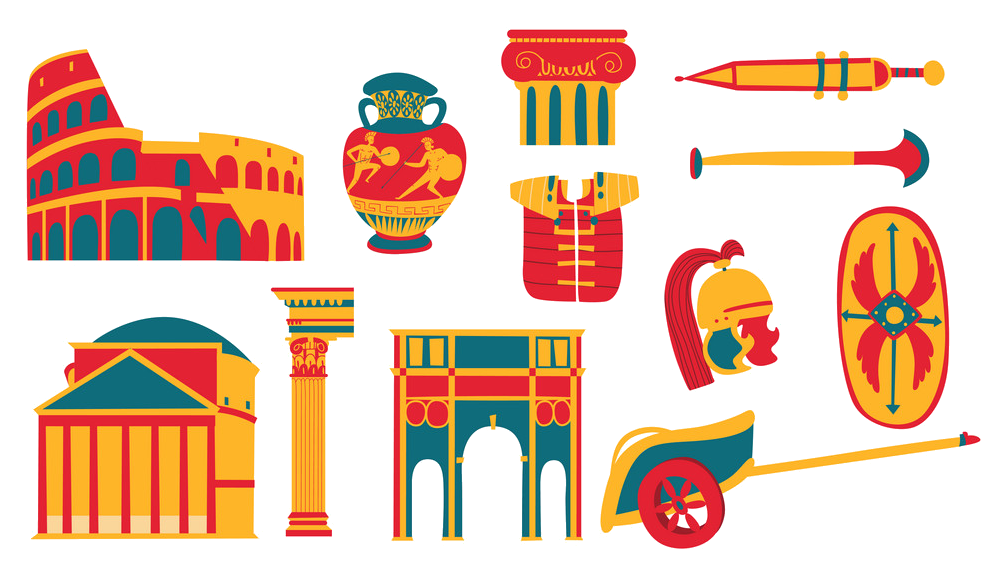

Exeter [ˈɛksɪtə] ist die Hauptstadt der Grafschaft Devon im Südwesten Englands und war früher die Hauptstadt von Cornwall. 2016 zählte die Stadt knapp unter 130.000 Einwohner.[1] Exeter liegt an einer Furt des Flusses Exe, einige Kilometer nördlich der Mündung in den Ärmelkanal. Der Wahlspruch der Stadt, Semper fidelis („für immer treu“),[2] wurde 1588 von Elisabeth I. vorgeschlagen.
埃克塞特(英语:Exeter,读音: /'eksɪtər/ 帮助·信息),英国英格兰西南区域德文郡郡治、城市。据2001年人口普查,埃克塞特的人口有111,076人。2010年则估计人口有119,600人[2]。埃克塞特的大教堂始建于12世纪初,并在16世纪宗教改革后是英国国教的教堂。埃克塞特的交通十分发达。埃克塞特是一个著名的旅游都市,然而这里的主要产业却不是旅游业。在罗马时期这里就有了都市。之后撒克逊人来到了这里。埃克塞特的都市规模仍在不断扩大。工业和服务业是这里的主要产业。埃克塞特市内有众多旅游景点及购物设施。市内有不少宗教建筑。埃克塞特的市政厅建于中世纪,号称是英格兰历史最长的市政厅,并且迄今都仍在使用。
/'eksɪtər/ 帮助·信息),英国英格兰西南区域德文郡郡治、城市。据2001年人口普查,埃克塞特的人口有111,076人。2010年则估计人口有119,600人[2]。埃克塞特的大教堂始建于12世纪初,并在16世纪宗教改革后是英国国教的教堂。埃克塞特的交通十分发达。埃克塞特是一个著名的旅游都市,然而这里的主要产业却不是旅游业。在罗马时期这里就有了都市。之后撒克逊人来到了这里。埃克塞特的都市规模仍在不断扩大。工业和服务业是这里的主要产业。埃克塞特市内有众多旅游景点及购物设施。市内有不少宗教建筑。埃克塞特的市政厅建于中世纪,号称是英格兰历史最长的市政厅,并且迄今都仍在使用。

Augsburg ist eine kreisfreie Großstadt im Südwesten Bayerns und zählt zu dessen drei Metropolen.[2] Sie ist Universitätsstadt und Sitz der Regierung und des Bezirks Schwaben sowie des Landratsamtes des die Stadt im Westen umgebenden Landkreises Augsburg.
Augsburg wurde 1909 zur Großstadt und ist mit knapp 300.000 Einwohnern nach München und Nürnberg die drittgrößte Stadt Bayerns. Der Ballungsraum Augsburg steht bezüglich Bevölkerung und Wirtschaftskraft in Bayern ebenfalls an dritter Stelle und ist Teil der Planungsregion Augsburg, in der etwa 885.000 Menschen leben. Augsburg hatte im Jahr 2017 die zweitgeringste Rate aller Straftaten unter den deutschen Großstädten über 200.000 Einwohnern.[3]
Der Name der Stadt, die zu den ältesten in Deutschland gehört, geht auf das 15 v. Chr. gegründete römische Heerlager und die spätere römische Provinzhauptstadt Augusta Vindelicum zurück. Im 13. Jahrhundert löste sich die Stadt von der Bischofsherrschaft, wurde spätestens 1316 zur Reichsstadt und häufiger Schauplatz von Reichstagen mit engen Verbindungen zu den Herrschern des Heiligen Römischen Reiches, die unter anderem von den Kaufmannsfamilien Welser und Fugger finanziert wurden („Fuggerstadt“). Nach der Reformation wurde Augsburg bikonfessionell; hier wurde der Augsburger Religionsfriede 1555 geschlossen. Seit Februar 2018 läuft eine Bewerbung zur Anerkennung als UNESCO-Welterbe.
Augsburg ist die einzige deutsche Stadt mit einem auf das Stadtgebiet beschränkten gesetzlichen Feiertag, dem Augsburger Hohen Friedensfest, das jedes Jahr am 8. August gefeiert wird. Damit hat sie mehr gesetzliche Feiertage als jede andere Region oder Stadt in Deutschland.
奥格斯堡(德语:Augsburg,又译奥古斯堡)是一座位于德国南部、巴伐利亚西南的城市。在神圣罗马帝国时代奥格斯堡就被划定是一帝国自由城市,直属于皇帝。今日的奥格斯堡除了是施瓦本行政区的地区政府所在地之外,也是奥格斯堡县的县府。
奥格斯堡自称是继特里尔之后德国第二古老的城市,其名称来源于前15年罗马皇帝屋大维统治时期建立的古罗马兵营奥古斯塔-温德利科伦(Augusta Vindelicorum),而该兵营的命名由来则是屋大维的称号“奥古斯都”。
2015年12月31日奥格斯堡有286,374名居民,是巴伐利亚州继慕尼黑和纽伦堡后第三大城市。1906年奥格斯堡的人口数量超过十万人,在德国属于大城市。它是巴伐利亚的23个地区中央之一。其附近的大城市有慕尼黑(东南约57千米)、纽伦堡(北约121千米)和斯图加特(西北约133千米)。奥格斯堡的都市地区在巴伐利亚也是第三大的,其总人口约为83万。
奥格斯堡是德国唯一一座有自己的官方节日的城市:8月8日是奥格斯堡和平节,因此奥格斯堡是德国节假日数量最高的城市。奥格斯堡是天主教主教的驻地。
アウクスブルク(ドイツ語: Augsburg [ˈʔaʊ̯ksbʊʁk] (![]() 音声ファイル), アレマン語:Augschburg(アウクシュブルク))は、ドイツ連邦共和国バイエルン州南西部に位置する郡独立市である。
音声ファイル), アレマン語:Augschburg(アウクシュブルク))は、ドイツ連邦共和国バイエルン州南西部に位置する郡独立市である。
シュヴァーベン郡市連合、シュヴァーベン行政管区およびアウクスブルク郡の本部所在地であり、大学都市としても知られる。
アウクスブルクは1909年に大都市となり、26万人強の人口を有するこの街はミュンヘン、ニュルンベルクに次ぐバイエルン州第3の都市である。アウクスブルク都市圏はその人口、経済力ともに、やはりバイエルン州で3番目の規模であり、約83万人が住むアウクスブルク開発地域の一部である。
都市名はローマ属州時代のアウグスタ・ヴィンデリコルム (Augusta Vindelicorum) に由来し、紀元前15年にローマ皇帝アウグストゥスによって築かれた城にその起源を持つ。このため、アウクスブルクはドイツで最も古い都市の一つに数えられる。また、15世紀から16世紀に、フッガー家やヴェルザー家によって金融都市として繁栄を極めたことから、「フッガーシュタット」(フッガー都市)としばしば称される。
なお、標準ドイツ語では「アウクスブルク」と発音されるが、日本語では「g」を濁音で読み「アウグスブルク」「アウグスブルグ」などと表記される場合もある[2]。
Augsburg (German pronunciation: [ˈaʊ̯ksbʊʁk] ( listen); Austro-Bavarian: Augschburg) is a city in Swabia, Bavaria, Germany. It is a university town and regional seat of the Regierungsbezirk Schwaben. Augsburg is an urban district and home to the institutions of the Landkreis Augsburg. It is the third-largest city in Bavaria (after Munich and Nuremberg) with a population of 300,000 inhabitants, with 885,000 in its metropolitan area.[2]
listen); Austro-Bavarian: Augschburg) is a city in Swabia, Bavaria, Germany. It is a university town and regional seat of the Regierungsbezirk Schwaben. Augsburg is an urban district and home to the institutions of the Landkreis Augsburg. It is the third-largest city in Bavaria (after Munich and Nuremberg) with a population of 300,000 inhabitants, with 885,000 in its metropolitan area.[2]
After Neuss and Trier, Augsburg is Germany's third oldest city, founded in 15 BC by the Romans as Augusta Vindelicorum, named after the Roman emperor Augustus. It was a Free Imperial City from 1276 to 1803 and the home of the patrician Fugger and Welser families that dominated European banking in the 16th century. The city played a leading role in the Reformation as the site of the 1530 Augsburg Confession and 1555 Peace of Augsburg. The Fuggerei, the oldest social housing complex in the world, was founded in 1513 by Jakob Fugger.
Augsbourg (allemand Augsburg, prononcé en allemand : [ˈʔaʊ̯ksbʊʁk] Écouter ; latin Augusta Vindelicorum) est une ville allemande située dans le Land de Bavière, en Souabe bavaroise, sur la Route romantique.
Ville universitaire et industrielle, Augsbourg est le chef-lieu du district de Souabe (Regierungsbezirk Schwaben), de l'arrondissement d'Augsbourg (Landkreis) et le siège d'un diocèse catholique. Ses palais, ses églises et son hôtel de ville reflètent son âge d'or, lorsqu'elle était aux XVe et XVIe siècles une ville de premier rang en Europe.
La ville a actuellement environ 286 000 habitants (286 374 au 31 décembre 2015) et est ainsi, après Munich et Nuremberg, la troisième ville de Bavière. Son nom vient du latin Augusta Vindelicorum.
Augsbourg est une ville-arrondissement (Kreisfreie Stadt) et une des 82 grandes villes (Großstadt) allemandes depuis le début du XXe siècle ; le nombre de ses habitants a franchi la barre des 100 000 à la même époque.
Augusta (in tedesco: Augsburg, in bavarese Augschburg, in latino: Augusta Vindelicorum e anche Augusta Vindelicum) è una città extracircondariale della Germania, situata nella parte sud-occidentale della Baviera. È capoluogo del distretto governativo della Svevia ed è la sede amministrativa del circondario di Augusta.
Nel 2016 il Consiglio Federale Bavarese ha innalzato Augsburg a città metropolitana Con 300.000 abitanti[3] 885.000 abitanti nel Area Urbana è la terza città più popolosa della Baviera dopo Monaco e Norimberga. La città è sede vescovile della diocesi cattolica di Augusta e di un'università fondata nel 1970.
Fondata nel 15 a.C. durante il regno dell'imperatore Augusto, si contende, con altre città tedesche, il titolo di più antica città della Germania.
Augsburgo (en alemán: Augsburg  [ˈaʊ̯ksbʊʁk] (?·i)) es una ciudad metrópoli alemana. Es la capital de la región administrativa de Suabia del estado federado de Baviera. Augsburgo es ciudad independiente y al mismo tiempo capital del distrito homónimo.
[ˈaʊ̯ksbʊʁk] (?·i)) es una ciudad metrópoli alemana. Es la capital de la región administrativa de Suabia del estado federado de Baviera. Augsburgo es ciudad independiente y al mismo tiempo capital del distrito homónimo.
А́угсбург (нем. Augsburg, бав. Augschburg) — университетский город на юго-западе Баварии, столица Швабии. Считается наиболее древним городом Германии после Трира. С населением в 293.415 тысяч жителей является третьим по величине городом в Баварии (после Мюнхена и Нюрнберга). Крупный научный и промышленный центр; в 1997 году был назван самым «зелёным» городом в конкурсе, в котором участвовали девять европейских стран.


 Architecture
Architecture
 Eurovision Song Contest,ESC
Eurovision Song Contest,ESC
 FIFA Fussball-Weltmeisterschaft 1998
FIFA Fussball-Weltmeisterschaft 1998

 Financial
Financial
 ***Global Financial Center
***Global Financial Center
 France
France
 UEFA European Championship 2016
UEFA European Championship 2016
 Women's Soccer World Cup 2019
Women's Soccer World Cup 2019

 History
History
 N 2000 - 2100 AD
N 2000 - 2100 AD

 Ile-de-France
Ile-de-France

 International cities
International cities
 *European Capital of Culture
*European Capital of Culture

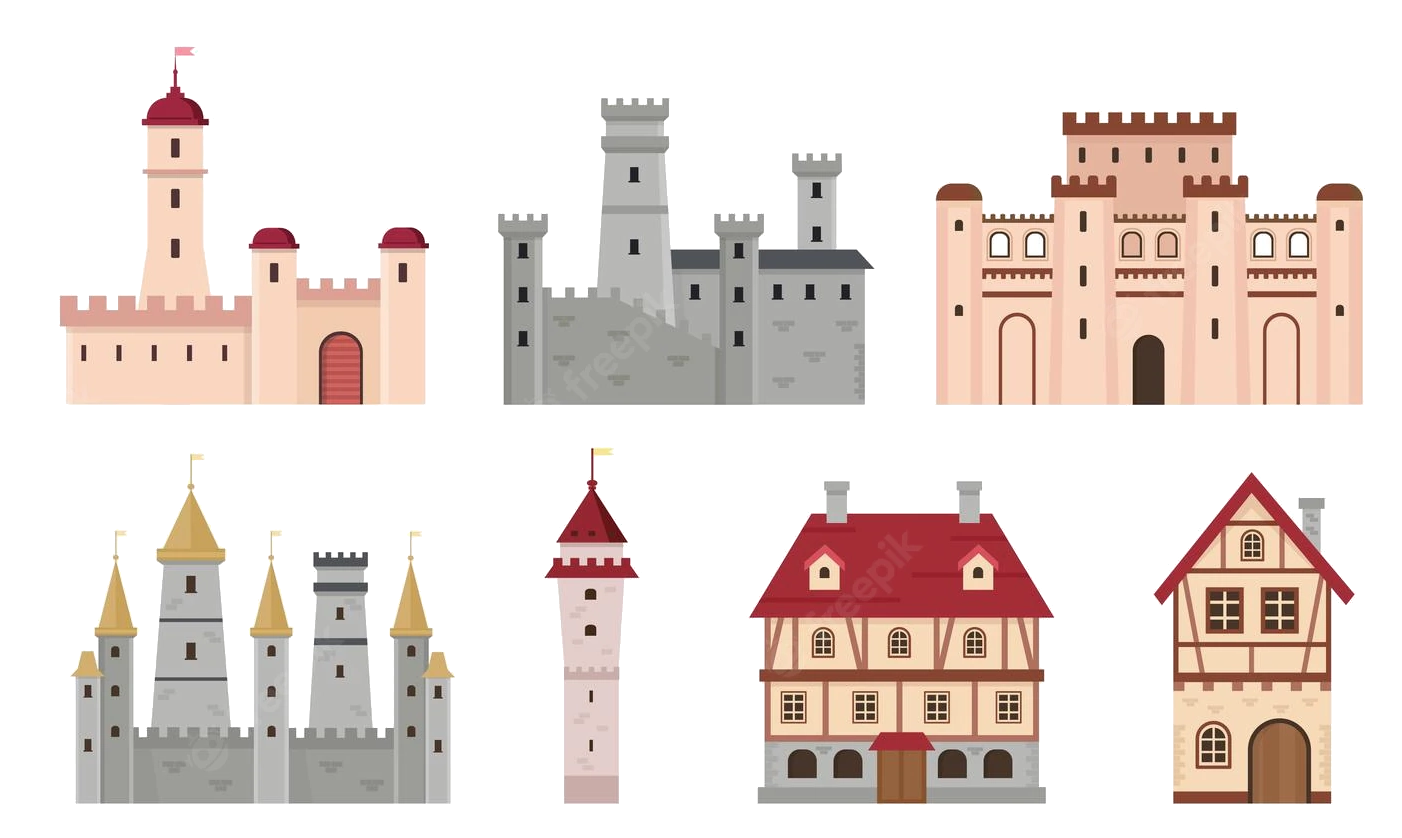 Medieval cities in Europe
Medieval cities in Europe
 Olympic Summer Games
Olympic Summer Games

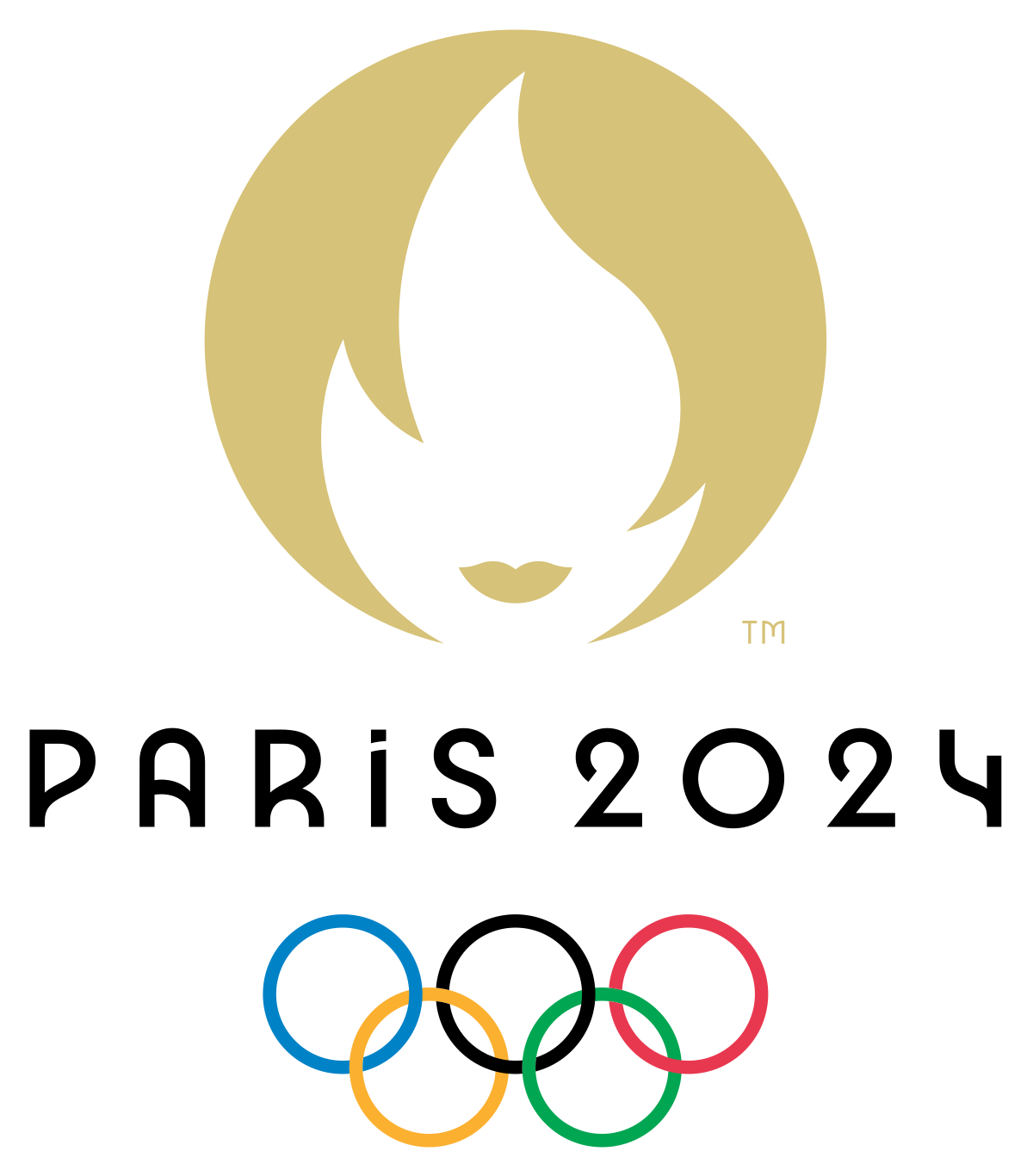 2024 Summer Olympics
2024 Summer Olympics
 Silk road
Silk road
 Seine
Seine

 Cities founded by the Romans
Cities founded by the Romans

Paris (französisch [paˈʁi]) ist die Hauptstadt der Französischen Republik und Hauptort der Region Île-de-France. Der Fluss Seine teilt die Stadt in einen nördlichen (Rive Droite, „rechtes Ufer“) und einen südlichen Teil (Rive Gauche, „linkes Ufer“); administrativ ist sie in 20 Stadtbezirke (Arrondissements) unterteilt. Mit mehr als 2,2 Millionen Einwohnern ist Paris die fünftgrößte Stadt der Europäischen Union sowie mit über 12,5 Millionen Menschen nach London die zweitgrößte Metropolregion der EU.[1][2][3][4] Mit einer vergleichsweise kleinen Stadtfläche von nur 105 Quadratkilometern ist Paris mit rund 21.000 Einwohnern pro Quadratkilometer die am dichtesten besiedelte Großstadt Europas.
Paris ist das überragende politische, wirtschaftliche sowie kulturelle Zentrum des zentralistisch organisierten Frankreichs und mit drei Flughäfen und sechs Kopfbahnhöfen dessen größter Verkehrsknotenpunkt. Teile des Seine-Ufers zählen heute zum UNESCO-Welterbe. Die Stadt ist Sitz der UNESCO und darüber hinaus der OECD und der ICC. Sehenswürdigkeiten wie der Eiffelturm, die Kathedrale Notre-Dame oder der Louvre machen die Stadt zu einem beliebten Touristenziel. Mit rund 16 Millionen ausländischen Touristen pro Jahr ist die Stadt hinter London und Bangkok eine der meistbesuchten Städte weltweit.[5] Der Großraum Paris (Île-de-France) verzeichnet jährlich über 47 Millionen Gäste aus dem In- und Ausland und mehr als 184 Millionen Übernachtungen.[6]
Das heutige Paris entwickelte sich seit dem 3. Jahrhundert aus der keltischen Siedlung „Lutetia“ auf der Île de la Cité. Später errichteten die Römer an der Seine eine Stadt, die im 6. Jahrhundert zunächst eine Hauptresidenz des Fränkischen Reiches wurde. Eine Blütezeit der Kunst und Kultur erlebte Paris im 16. Jahrhundert unter Franz I. Durch den Absolutismus, insbesondere unter Ludwig XIV. im 17. Jahrhundert, wurde die Stadt um zahlreiche barocke Gebäude und Prachtstraßen bereichert und so zu einem beispielhaften Muster für barocken Städtebau. Obwohl die Königsresidenz 1682 nach Versailles verlegt wurde, blieb sie aufgrund ihrer politischen und wirtschaftlichen Bedeutung das Zentrum des Landes. In der Französischen Revolution kam ihr ab 1789 eine welthistorische Bedeutung zu. Die Industrialisierung führte im 19. Jahrhundert zu einem enormen Bevölkerungszuwachs, sodass 1846 erstmals die Grenze von einer Million Einwohnern überschritten wurde. In den folgenden Jahrzehnten bekam die Stadt durch die sogenannte Belle Époque und sechs Weltausstellungen weltweite Beachtung. Heute ist sie Hauptort der französischsprachigen und eine der wichtigsten Städte der westlichen Welt.
巴黎市(法语:Paris)是法国的首都和最大城市,也是法国的政治与文化中心。其隶属法兰西岛大区之下的巴黎省(编号第75省;仅辖有1个同名的省区与市镇),也是法兰西岛大区的核心。目前所谓的巴黎市辖区范围大至仅为旧巴黎城墙内(环城道路内侧),并未包含巴黎扩张发展的大巴黎实际都市区域,巴黎市辖区内依照发展历史共分成20个区,,自从1860年代开始就没有重大变化。截至2009年为止,巴黎市内人口超过223万[1] ,巴黎都会区的人口逾1,200万[2] ,是欧洲最大的都会区之一[3]。
巴黎在将近1,000年的时间中是西方世界最大的城市,也曾经是世界上最大的城市(16世纪至19世纪之间)[4][5][6]。目前是世界上最重要的政治与文化中心之一,对于教育、娱乐、时尚、科学、媒体、艺术与政治等方面皆有重大影响力,被认为是世界上最重要的全球城市之一[7][8][9][10] ,一般普世观念上与日本东京、美国纽约、英国伦敦并列世界四大国际级都市。许多国际组织都将总部设立在巴黎,例如联合国教育、科学及文化组织、经济合作与发展组织、国际商会或巴黎俱乐部等。巴黎也是欧洲绿化最深[11] 与最适合人类居住的城市之一[12] ,也是世界上生活费用最高的城市之一[13][14]。
巴黎与法兰西岛大区大约贡献法国4分之1的国内生产总值,在2009年为5,521亿欧元[15] 。根据估计,巴黎是欧洲第一[16] 或第二大城市经济体,也是世界上第六大城市经济体[17]〈按购买力平价PPP调整〉。总共有33间财富世界500强企业的总部设立在巴黎都会区[18],是欧洲最集中的地区。巴黎市辖区范围外的商业区拉德芳斯是欧洲最大的中央商务办公区[19]。巴黎的高等教育机构是欧盟最集中的地区[20],高等教育研究与发展支出也是欧洲最高的地区。巴黎也被认为是世界上最适合研发创新的城市之一[21]。每年有4,200万人造访巴黎与邻近都会区,也让巴黎成为世界上最多观光客造访的城市[20]。巴黎与与邻近都会区总共有3,800个法国国家遗产与4个世界遗产[20]。巴黎也是1989年的欧洲文化之城。
パリ(仏: Paris[1]、巴里)は、フランス北部、イル=ド=フランス地域圏にある都市。フランスの首都であり、イル=ド=フランス地域圏の首府である。
フランス最大の都市であり、同国の政治、経済、文化などの中心である。ロンドン、ニューヨーク、香港、東京などと並ぶ世界トップクラスの世界都市でもある。行政上では、1コミューン単独で県を構成する特別市であり、ルーヴル美術館を含む1区を中心に、時計回りに20の行政区が並ぶ(エスカルゴと形容される[2])。
市域はティエールの城壁跡に造られた環状高速道路の内側の市街地(面積は86.99km2。参考:東京都・山手線の内側は63km2、ニューヨーク市・マンハッタンは59km2)、および、その外側西部のブローニュの森と外側東部のヴァンセンヌの森を併せた形となっており、面積は105.40 km2。ケスタ地形を呈するパリ盆地のほぼ中央に位置し、市内をセーヌ川が貫く。この川の中州であるシテ島を中心に発達した。市内の地形は比較的平坦であるが、標高は最低でセーヌ川沿いの35メートル、最高でモンマルトルの丘の130メートルである[3]。北緯49度とやや高緯度に位置するが、温かい北大西洋海流と偏西風によって一年を通して比較的温暖となっており、西岸海洋性気候の代表的な都市である。
世界有数の大都市であり、アメリカのシンクタンクが2017年に発表した総合的な世界都市ランキングにおいて、ロンドン、ニューヨークに次ぐ世界3位の都市と評価された[4]。日本の民間シンクタンクによる2017年発表の「世界の都市総合力ランキング」(森記念財団都市戦略研究所、森ビル)では、ロンドン、ニューヨーク、東京に次ぐ世界4位の都市と評価された[5]。フランス経済の中心地で、世界屈指の経済都市であり、多国籍企業の本社数や資本市場の規模などビジネス分野を総合評価した都市ランキングでは、ロンドンと共にヨーロッパでトップクラスであり、世界500大企業の本社数では、ニューヨークやロンドンを凌ぎ、西洋の都市では最多である。2014年のアメリカのダウ・ジョーンズらの調査によると、世界7位の金融センターと評価されており、欧州ではロンドンに次ぐ2位である[6]。
パリは年間外国人観光客数が世界一の観光都市である。歴史的な建物を観ることができ、ルーヴル美術館、ポンピドゥーセンターなどを始めとした一流の美術館で厖大な数の一流の美術品を観賞できる。また世界最古のバレエ団や、世界で最も古くから存在している劇団などの公演を楽しむこともできる。
パリ出身者・居住者は男性がパリジャン(仏: Parisien、フランス語発音: [parizjɛ̃] パリズィヤン)、女性がパリジェンヌ(仏: Parisienne、フランス語発音: [parizjɛn] パリズィエンヌ)と呼ばれる。1960年代以降、旧植民地であったアフリカ中部・北部やインドシナ半島、更に近年は中近東や東欧、中国などからの移民も増え、パリジャン・パリジェンヌも多民族・多人種化している。
市域人口は1950年代の約290万人を絶頂に減少し続けたが、ここ数年は微増傾向に転じており、2011年現在で約225万人である(INSEEによる)。2011年の近郊を含む都市的地域の人口では1,200万人を超えており、ロンドンを凌ぐEU最大の都市部を形成している[7]。
Paris (French pronunciation: [paʁi] ( listen)) is the capital and most populous city of France, with an area of 105 square kilometres (41 square miles) and a population of 2,206,488.[5][6] Since the 17th century, Paris has been one of Europe's major centres of finance, commerce, fashion, science, music, and painting. The Paris Region had a GDP of €681 billion (US$850 billion) in 2016, accounting for 31 per cent of the GDP of France.[7] In 2013–2014, the Paris Region had the third-highest GDP in the world and the largest regional GDP in the EU. According to the Economist Intelligence Unit Worldwide Cost of Living Survey in 2018, Paris was the second-most expensive city in the world, behind Singapore and ahead of Zurich, Hong Kong, Oslo and Geneva.[8]
listen)) is the capital and most populous city of France, with an area of 105 square kilometres (41 square miles) and a population of 2,206,488.[5][6] Since the 17th century, Paris has been one of Europe's major centres of finance, commerce, fashion, science, music, and painting. The Paris Region had a GDP of €681 billion (US$850 billion) in 2016, accounting for 31 per cent of the GDP of France.[7] In 2013–2014, the Paris Region had the third-highest GDP in the world and the largest regional GDP in the EU. According to the Economist Intelligence Unit Worldwide Cost of Living Survey in 2018, Paris was the second-most expensive city in the world, behind Singapore and ahead of Zurich, Hong Kong, Oslo and Geneva.[8]
The City of Paris's administrative limits form an East-West oval centred on the island at its historical heart, the Île de la Cité; this island is near the top of an arc of the river Seine that divides the city into southern Rive Gauche (Left Bank) and northern Rive Droite regions. Paris is the core of a built-up area that extends well beyond its limits: commonly referred to as the agglomération Parisienne, and statistically as a unité urbaine (a measure of urban area), the Paris agglomeration's 2013 population of 10,601,122 made it the largest urban area in the European Union.[3][not in citation given] City-influenced commuter activity reaches well beyond even this in a statistical aire urbaine de Paris (a measure of metropolitan area), that had a 2013 population of 12,405,426,[9] a number one-fifth the population of France,[10] the largest metropolitan area in the Eurozone.
The city is a major rail, highway, and air-transport hub served by two international airports: Paris-Charles de Gaulle (the second busiest airport in Europe after London Heathrow Airport with 69.5 million passengers in 2017) and Paris-Orly.[11][12] Opened in 1900, the city's subway system, the Paris Métro, serves 5.23 million passengers daily,[13] and is the second busiest metro system in Europe after Moscow Metro. Paris's Gare du Nord is one of the ten busiest railway stations in the world, with 262 million passengers in 2015.[14]
Paris is especially known for its museums and architectural landmarks: the Louvre was the most visited art museum in the world in 2017, with 8.1 million visitors.[15][16] The Musée d'Orsay and Musée de l'Orangerie are noted for their collections of French Impressionist art, and the Pompidou Centre Musée National d'Art Moderne has the largest collection of modern and contemporary art in Europe. The historical district along the Seine in the city centre is classified as a UNESCO Heritage Site. Popular landmarks in the centre of the city include the Cathedral of Notre Dame de Paris and the Gothic royal chapel of Sainte-Chapelle, both on the Île de la Cité; the Eiffel Tower, constructed for the Paris Universal Exposition of 1889; the Grand Palais and Petit Palais, built for the Paris Universal Exposition of 1900; the Arc de Triomphe on the Champs-Élysées, and the Basilica of Sacré-Coeur on the hill of Montmartre. Paris received 23 million visitors in 2017, measured by hotel stays, with the largest numbers of foreign visitors coming from the United States, the UK, Germany and China.[17][18] It was ranked as the third most visited travel destination in the world in 2017, after Bangkok and London.[19]
The football club Paris Saint-Germain and the rugby union club Stade Français are based in Paris. The 80,000-seat Stade de France, built for the 1998 FIFA World Cup, is located just north of Paris in the neighbouring commune of Saint-Denis. Paris hosts the annual French Open Grand Slam tennis tournament on the red clay of Roland Garros. Paris hosted the Olympic Games in 1900, 1924 and will host the 2024 Summer Olympics. The 1938 and 1998 FIFA World Cups, the 2007 Rugby World Cup, and the 1960, 1984, and 2016 UEFA European Championships were also held in the city and, every July, the Tour de France bicycle race finishes there.
Paris (prononcé [pa.ʁi] Écouter) est la capitale de la France. Elle se situe au cœur d'un vaste bassin sédimentaire aux sols fertiles et au climat tempéré, le bassin parisien, sur une boucle de la Seine, entre les confluents de celle-ci avec la Marne et l'Oise. Ses habitants s’appellent les Parisiens. Paris est également le chef-lieu de la région Île-de-France et l'unique commune française qui est en même temps un département. Commune centrale de la métropole du Grand Paris, créée en 2016, elle est divisée en arrondissements, comme les villes de Lyon et de Marseille, au nombre de vingt. L’État y dispose de prérogatives particulières exercées par le préfet de police de Paris.
Ville la plus peuplée de France, elle est quatrième parmi les aires urbaines européennes derrière Moscou, Istanbul et Londres et la 29e plus peuplée du monde. Paris compte 2,21 millions d'habitants au 1er janvier 2015. L'agglomération parisienne s’est largement développée au cours du XXe siècle, rassemblant 10,71 millions d'habitants au 1er janvier 2015, et son aire urbaine (l'agglomération et la couronne périurbaine) comptait 12,53 millions d'habitants.
La position de Lutèce, sur une île permettant le franchissement du grand fleuve navigable qu'est la Seine par une voie reliant le Nord et le Sud des Gaules, en fait dès l'Antiquité une cité importante, capitale des Parisii, puis lieu de séjour d'un empereur romain. Sa position au centre du territoire contrôlé par les rois Francs la fait choisir comme capitale de la France à la place de Tournai. Située au cœur d'un territoire agricole fertile avec un climat humide et doux, Paris devient une des principales villes de France au cours du Xe siècle, avec des palais royaux, de riches abbayes et une cathédrale ; au cours du XIIe siècle, avec l'Université de Paris, la cité devient un des premiers foyers en Europe pour l’enseignement et les arts. Le pouvoir royal se fixant dans cette ville, son importance économique et politique ne cesse de croître. Ainsi, au début du XIVe siècle, Paris est l'une des villes les plus importantes du monde chrétien. Au XVIIe siècle, elle est la capitale de la principale puissance politique européenne, au XVIIIe siècle l'un des plus grands centres culturels de l’Europe et au XIXe siècle la capitale des arts et des plaisirs. Paris joue donc un rôle culturel, politique et économique majeur dans l’histoire de l'Europe et du monde occidental au cours du IIe millénaire.
Symbole de la culture française, abritant de nombreux monuments, la ville, surnommée la Ville Lumière, attire en 2017 près de 34 millions de visiteurs ce qui en fait une des capitales les plus visitées au monde. Paris occupe également une place prépondérante dans le monde dans le milieu de la mode, du luxe et de la haute gastronomie. La capitale française n'est jumelée qu'avec une seule autre ville, Rome, ce qui est valable dans l'autre sens, avec ce slogan : « Seul Paris est digne de Rome, seule Rome est digne de Paris ». Paris sera, par ailleurs, en 2024 la deuxième ville avec Londres à avoir accueilli trois fois les Jeux olympiques après ceux de 1900 et ceux de 1924.
La ville est, avec sa banlieue, la capitale économique et commerciale de la France, ainsi que sa première place financière et boursière. Elle accueillera en 2019 l'Autorité bancaire européenne. La région parisienne, avec un produit intérieur brut (PIB) de 649 milliards d'euros en 2014, est un acteur économique européen majeur et la première région européenne par le PIB régional, devant la Rhénanie du Nord-Westphalie (627 milliards d'euros) et le Grand Londres (509 milliards d'euros). Elle est également l'une des régions les plus riches d'Europe avec un PIB par habitant de 52 900 euros en 2014. Paris est le siège de plusieurs organisations internationales comme l'UNESCO ou l'OCDE.
La densité de ses réseaux ferroviaire, autoroutier et de ses structures aéroportuaires en font un point de convergence pour les transports nationaux et internationaux. Cette situation résulte d’une longue évolution, en particulier des conceptions centralisatrices des monarchies et des républiques, qui donnent un rôle considérable à la capitale dans le pays et tendent à y concentrer les institutions. Depuis les années 1960, les politiques gouvernementales oscillent toutefois entre déconcentration et décentralisation. La macrocéphalie dont est atteinte la ville se concrétise par la convergence de la plupart des réseaux routiers et ferroviaires du pays en son centre et des écarts démographiques et économiques disproportionnés entre la capitale et la province : près de 19 % de la population française vit dans l'aire urbaine de Paris.
París (en francés Paris, pronunciado  [paʁi] (?·i)) es la capital de Francia y su ciudad más poblada. Capital de la región de Isla de Francia (o "Región Parisina"), es constituida en la única comuna unidepartamental del país. Está situada a ambos márgenes de un largo meandro del río Sena, en el centro de la cuenca parisina, entre la confluencia del río Marne y el Sena, aguas arriba, y el Oise y el Sena, aguas abajo.
[paʁi] (?·i)) es la capital de Francia y su ciudad más poblada. Capital de la región de Isla de Francia (o "Región Parisina"), es constituida en la única comuna unidepartamental del país. Está situada a ambos márgenes de un largo meandro del río Sena, en el centro de la cuenca parisina, entre la confluencia del río Marne y el Sena, aguas arriba, y el Oise y el Sena, aguas abajo.
La ciudad de París, dentro de sus estrechos límites administrativos, tiene una población de 2 273 305 habitantes en 2015.2 Sin embargo, en el siglo XX, el área metropolitana de París se expandió más allá de los límites del municipio de París, y es hoy en día, con una población de 12 405 426 habitantes en 2013, la segunda área metropolitana del continente europeo (después de Londres) y la 28ª del mundo.4
La región de París es junto con la de Londres, uno de los núcleos económicos más importantes de Europa.6 Con 607 000 millones de euros (845 000 millones de dólares), produjo más de una cuarta parte del producto interior bruto (PIB) de Francia en 2011.7 La Défense es el principal barrio de negocios de Europa,8 alberga la sede social de casi la mitad de las grandes empresas francesas, así como la sede de veinte de las 100 más grandes del mundo.
Durante el siglo XIX y XX junto con la ciudad de Londres, 9 París fue el centro de desarrollo de proyectos arquitectónicos dentro del marco de la Revolución Industrial y sus famosas exposiciones. Ejemplos de ello son: el Mercado de la Madeleine, en 1824; las Grandes Halles iniciadas en 1853 , las Galerie des Machines y la Torre Eiffel ambas realizadas en la exposición de París de 1889.
Es conocida también como la «Ciudad Luz» (la Ville lumière), es el destino turístico más popular del mundo, con más de 42 millones de visitantes extranjeros por año.10 Cuenta con muchos de los monumentos más famosos y admirados del orbe: la Torre Eiffel, la Catedral de Notre Dame, la avenida de los Campos Elíseos, el Arco de Triunfo, la Basílica del Sacré Cœur, el Palacio de Los Inválidos, el Pante&
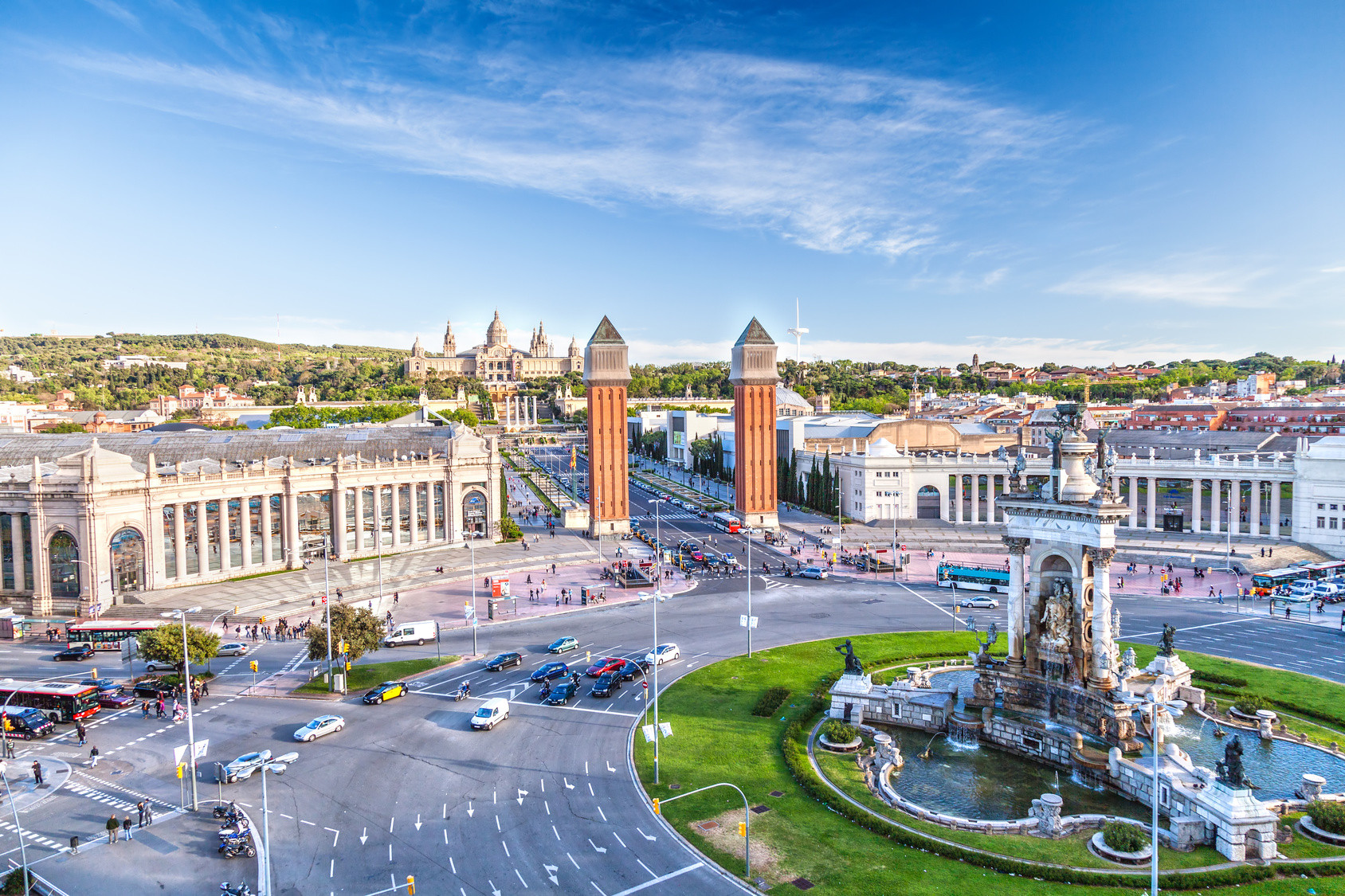
Barcelona (katalanisch [bəɾsəˈɫonə]; spanisch [baɾθeˈlona]; deutsch [baɐ̯səˈloːna] oder [baɐ̯t͡səˈloːna]) ist die Hauptstadt Kataloniens und nach Madrid die zweitgrößte Stadt Spaniens. Sie liegt am Mittelmeer, circa 120 Kilometer südlich der Pyrenäen und der Grenze zu Frankreich. Barcelona ist Verwaltungssitz der gleichnamigen Provinz und der Comarca Barcelonès.
Innerhalb des Stadtgebietes leben etwa 1,65 Millionen Menschen. Damit ist Barcelona die elftgrößte Gemeinde der Europäischen Union, nach Hamburg die zweitgrößte, die nicht die Hauptstadt eines Mitgliedstaates ist, und nach Paris die am zweitdichtesten besiedelte Millionenstadt Europas. Zusammen mit den in der Àrea Metropolitana de Barcelona zusammengeschlossenen Gemeinden der Agglomeration beträgt die Einwohnerzahl 3,16 Millionen. Im weiteren Einzugsbereich der Metropolregion (Àmbit Metropolità de Barcelona) leben insgesamt 4,86 Millionen Menschen. Mit jährlich mehr als sieben Millionen Touristen aus dem Ausland zählt Barcelona überdies zu den drei meistbesuchten Städten Europas.[2]
这座城市在展示通俗文化的同时,也没有忘记根深蒂固的传统。比如说,梅尔塞节还有在格拉西亚区、桑斯区或波布雷诺区举办的节庆活动,都向游客提供着不可多得的认识巴塞罗那的欢庆一面的机会。
以蔬果,新鲜水产香肠和橄榄油为基本原料,传统与现代相融合的烹饪手艺可以烹制出具有革新性又富有想象力的美食。于此,手工糖果和泡沫葡萄酒只能浅浅地触摸到巴塞罗那饮食文化的精髓。
巴塞罗那(加泰罗尼亚语:Barcelona,西班牙语:Barcelona)是西班牙加泰罗尼亚首府和巴塞罗那省省会,位于伊比利亚半岛的东北面,濒临地中海,全市人口约160万,都会区人口则约500万,为加泰罗尼亚第一大城。加泰罗尼亚的议会、行政机构、高等法院等政府中枢机构,以及最高首长均驻设于此。1999年,巴塞罗那由美国《国家地理杂志》评选为50个人生必游景点之一。
相传巴塞罗那由迦太基将领、汉尼拔的父亲哈米尔卡·巴卡所兴建,在其漫长的历史上还曾作为巴塞罗那伯爵领地和阿拉贡王国的都城。巴塞罗那因其众多历史建筑和文化景点成为众多旅游者的目的地,其中之代表是被列入联合国世界遗产的安东尼·高第和路易·多门内克·蒙塔内的建筑作品。安东尼·高第一直在巴塞罗那生活和工作,在这里有他很多的作品,其中最著名的包括桂尔宫、桂尔公园和圣家堂。巴塞罗那尚有两个知名的足球俱乐部:巴塞罗那和皇家西班牙人,其中巴塞罗那是世界最著名的足球俱乐部之一。
Barcelona (/ˌbɑːrsəˈloʊnə/ BAR-sə-LOH-nə, Catalan: [bəɾsəˈlonə], Spanish: [baɾθeˈlona]) is a city in Spain. It is the capital and largest city of Catalonia, as well as the second most populous municipality of Spain. With a population of 1.6 million within city limits,[5] its urban area extends to numerous neighbouring municipalities within the Province of Barcelona and is home to around 4.8 million people,[3][7] making it the sixth most populous urban area in the European Union after Paris, London, Madrid, the Ruhr area and Milan.[3] It is the largest metropolis on the Mediterranean Sea, located on the coast between the mouths of the rivers Llobregat and Besòs, and bounded to the west by the Serra de Collserola mountain range, the tallest peak of which is 512 metres (1,680 feet) high.
Founded as a Roman city, in the Middle Ages Barcelona became the capital of the County of Barcelona. After merging with the Kingdom of Aragon, Barcelona continued to be an important city in the Crown of Aragon as an economic and administrative centre of this Crown and the capital of the Principality of Catalonia. Barcelona has a rich cultural heritage and is today an important cultural centre and a major tourist destination. Particularly renowned are the architectural works of Antoni Gaudí and Lluís Domènech i Montaner, which have been designated UNESCO World Heritage Sites. The headquarters of the Union for the Mediterranean are located in Barcelona. The city is known for hosting the 1992 Summer Olympics as well as world-class conferences and expositions and also many international sport tournaments.
Barcelona is one of the world's leading tourist, economic, trade fair and cultural centres, and its influence in commerce, education, entertainment, media, fashion, science, and the arts all contribute to its status as one of the world's major global cities.[8][9] It is a major cultural and economic centre in southwestern Europe, 24th in the world (before Zürich, after Frankfurt)[10] and a financial centre. In 2008 it was the fourth most economically powerful city by GDP in the European Union and 35th in the world with GDP amounting to €177 billion.[11] In 2012 Barcelona had a GDP of $170 billion; and it was leading Spain in employment rate in that moment.[12]
In 2009 the city was ranked Europe's third and one of the world's most successful as a city brand.[13] In the same year the city was ranked Europe's fourth best city for business and fastest improving European city, with growth improved by 17% per year,[14] and the city has been experiencing strong and renewed growth for the past three years. Since 2011 Barcelona has been a leading smart city in Europe.[15] Barcelona is a transport hub, with the Port of Barcelona being one of Europe's principal seaports and busiest European passenger port,[16] an international airport, Barcelona–El Prat Airport, which handles over 40 million passengers per year,[17] an extensive motorway network, and a high-speed rail line with a link to France and the rest of Europe.[18]
Barcelone (Barcelona en catalan, prononcé /bəɾsəˈlonə/, et en espagnol, prononcé /baɾθeˈlona/) est la capitale administrative et économique de la Catalogne, de la province de Barcelone, de la comarque du Barcelonès ainsi que de son aire et de sa région métropolitaines, en Espagne.
Barcelone est la deuxième ville d'Espagne en termes de population, d'économie et d'activités, la onzième ville la plus peuplée de l'Union européenne et la sixième en incluant sa banlieue4: 4,84 millions de personnes vivent dans l'agglomération barcelonaise5. La majeure partie des municipalités adjacentes sont en outre rassemblées dans l'Aire métropolitaine de Barcelone.
Située sur le littoral méditerranéen, elle est traversée par les fleuves Llobregat et Besòs et bordée à l'ouest par la serra de Collserola qui culmine à 512 mètres (sommet : Tibidabo). Elle est considérée comme ville mondiale en raison de son importance dans les domaines de la finance, du commerce international, de l'édition, des arts, du divertissement et des médias. Barcelone est donc un centre économique majeur qui jouit de surcroît d'un des principaux ports méditerranéens et du deuxième aéroport espagnol derrière celui de Madrid-Barajas. Elle est aussi la ville qui possède le plus grand parc métropolitain du monde, le parc Collserola, devant Central Park à New York. Ayant été fondée par les Romains, la ville devint la capitale des comtes de Barcelone puis l'une des villes majeures de la Couronne d'Aragon et, après, la capitale de la principauté de Catalogne. Redessinée plusieurs fois pendant son histoire, elle est une destination touristique majeure et jouit d'un patrimoine culturel unique. Le palais Güell (en 1984), la Casa Milà, le parc Güell, le palais de la musique catalane et l'hôpital de Sant Pau figurent d'ailleurs sur la liste du patrimoine mondial de l'UNESCO. En outre, la ville est également connue pour avoir accueilli les Jeux olympiques en 1992 et, plus récemment, le siège de l'union pour la Méditerranée. Chaque année, les visiteurs arrivent par milliers et le nombre augmente de plus en plus. En 2015, un total de 8 988 038 touristes ont visité Barcelone6.
Barcellona (AFI: /barʧelˈlona/[1]; in catalano e spagnolo Barcelona) è una città di 1.620.809 abitanti (area metropolitana istituzionale: 3.239.337 abitanti) della Spagna, capoluogo della Catalogna, una comunità autonoma della parte nord-orientale dello Stato, oltre che dell'omonima provincia e della comarca del Barcelonès. Soprannominata Ciutat Comtal o Ciudad Condal (Città dei Conti), è la seconda città della Spagna per numero di abitanti dopo la capitale Madrid.
Nel 1992 fu sede dei Giochi Olimpici estivi. Nel 2004 vi si è tenuto per la prima volta assoluta il Forum Universale delle Culture, la città ha ospitato l'Esposizione internazionale del 1888 e quella del 1929, ed è la sede fissa del Mobile World Congress e dell'Unione per il Mediterraneo. Forte del turismo, del porto e della vicinanza alla Francia (160 km da Le Perthus), la città è il secondo maggior centro industriale e finanziario della Spagna dopo Madrid, nonché il maggior porto commerciale e turistico e uno dei maggiori d'Europa.
Barcelona es una ciudad española, capital de la comunidad autónoma de Cataluña, de la comarca del Barcelonés y de la provincia homónima.
Con una población de 1 620 809 habitantes en 2017,6 es la segunda ciudad más poblada de España después de Madrid, y la undécima de la Unión Europea. El área metropolitana de Barcelona, incluida en el ámbito metropolitano de Barcelona, cuenta con 5 029 181 habitantes (2011), siendo así la sexta ciudad de mayor población de la Unión Europea.78
Se ubica a orillas del mar Mediterráneo, a unos 120 km al sur de la cadena montañosa de los Pirineos y de la frontera con Francia, en un pequeño llano litoral limitado por el mar al este, la sierra de Collserola al oeste, el río Llobregat al sur y el río Besós al norte. Por haber sido capital del condado de Barcelona, se suele aludir a ella con la denominación antonomástica de Ciudad Condal.
La historia de Barcelona se extiende a lo largo de 4000 años, desde finales del Neolítico, con los primeros restos hallados en el territorio de la ciudad, hasta la actualidad. El sustrato de sus habitantes aúna a los pueblos íberos, romanos, judíos, visigodos, musulmanes y cristianos. Como capital de Cataluña y segunda ciudad en importancia de España, la Ciudad Condal ha forjado su relevancia con el tiempo, desde ser una pequeña colonia romana hasta convertirse en una ciudad valorada internacionalmente por aspectos como su economía, su patrimonio artístico, su cultura, su deporte y su vida social.
Barcelona ha sido escenario de diversos acontecimientos internacionales que han contribuido a consolidarla, desarrollarla y darle proyección mundial. Los más relevantes han sido la Exposición Universal de 1888, la Exposición Internacional de 1929, los Juegos Olímpicos de 1992 y el Fórum Universal de las Culturas 2004. Es también sede del secretariado de la Unión para el Mediterráneo.9
En la actualidad, Barcelona está reconocida como una ciudad global por su importancia cultural, financiera, comercial y turística. Posee uno de los puertos más importantes del Mediterráneo y es también un importante punto de comunicaciones entre España y Francia, debido a las conexiones por autopista y alta velocidad ferroviaria. El aeropuerto de Barcelona-El Prat, situado a 15 km del centro de la ciudad, fue utilizado por más de 47,2 millones de pasajeros en 2017.10

Bath [bɑːθ] ist eine ca. 100.000 Einwohner zählende Großstadt im Südwesten Englands. Sie ist berühmt für ihre römischen Bäder, die ab dem Jahr 43 n. Chr. von den damals hier lebenden Römern aus warmen Quellen entwickelt wurden. Diese einzigen heißen Quellen in England waren der Überlieferung nach schon in vorrömischer Zeit bekannt. Seit der Zeit Elisabeth I. entwickelte sich Bath immer mehr zum Kurort der wohlhabenden Bevölkerung. Daher gibt es noch viele historische Gebäude, insbesondere aus der georgianischen Epoche, in der Stadt. Der das Stadtbild prägende Werkstein ist der in der Nachbarschaft abgebaute Bath Stone. Bath ist Universitätsstadt und von der UNESCO als Weltkulturerbe eingestuft.
巴斯(英语:Bath,/ˈbɑːθ/或/ˈbæθ/;威尔士语:Caerfaddon)是英国英格兰西南区域萨默塞特郡巴斯和东北萨默塞特区的一座城市,位于伦敦以西156千米,布里斯托尔东南21千米,2021年人口普查时人口为94,092,较2001年人口增加了9900人。1590年,巴斯获得伊丽莎白女王一世颁发的皇家特许证而成为市级行政单位,1889年,它从萨默塞特郡中脱离出来,成为一个自治市,获得独立的行政管理权。1974年埃文郡成立,它被划归其中。1996年埃文郡废除后,巴斯和东北萨默塞特单一管理区成立,巴芙市成为该区的行政中心。
巴斯城最早建于公元43年,当时作为罗马帝国不列颠行省的一部分,巴斯是罗马人的温泉圣地,拉丁文名字是Aquae Sulis,意为“苏利丝之水”。但口头流传的说法称巴斯建城时间比这更早。埃文河谷地区的温泉是英格兰唯一的天然温泉,罗马人就在河谷之中,巴斯周围的小山上建立了温泉浴场和一座寺庙。公元973年,埃德加在巴斯修道院加冕成为英国国王。多年之后的乔治王时代,巴斯成为一个温泉圣地。这使巴斯城急剧扩张,留下许多杰出的乔治时期巴斯石制建筑。1987年,巴斯城当选为世界遗产城市之一。
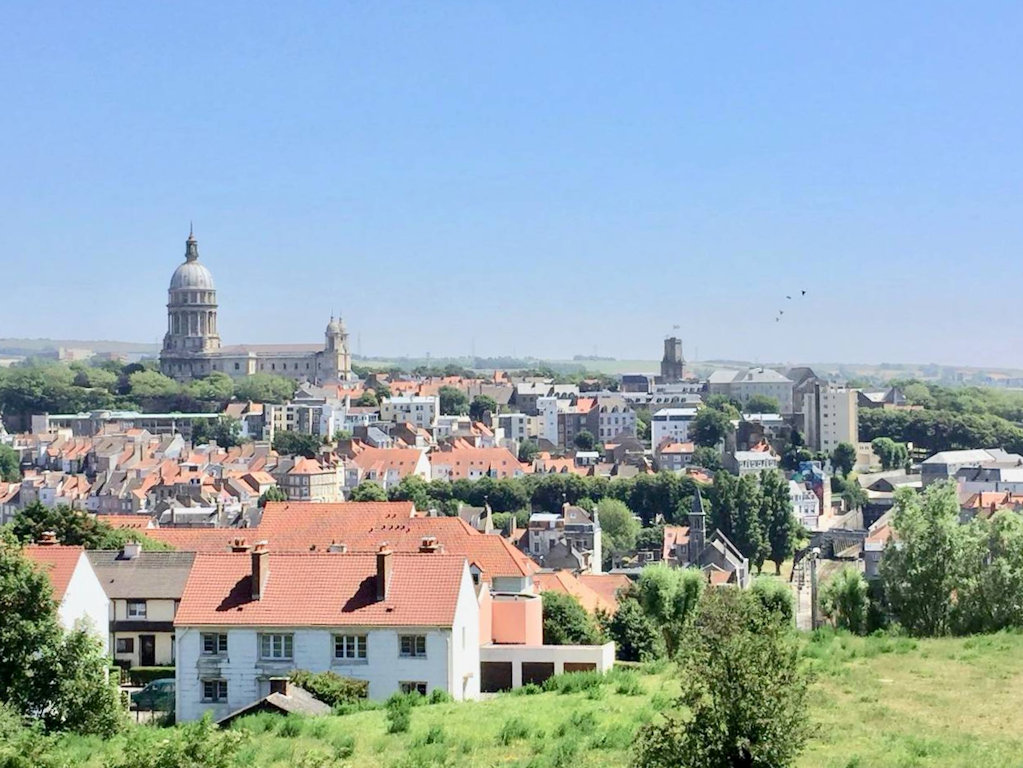
 UEFA European Championship 2020
UEFA European Championship 2020

 History
History
 ITU World Championship Series
ITU World Championship Series
 Silk road
Silk road

 Sport
Sport
 Triathlon
Triathlon
 Hungary
Hungary

 Cities founded by the Romans
Cities founded by the Romans

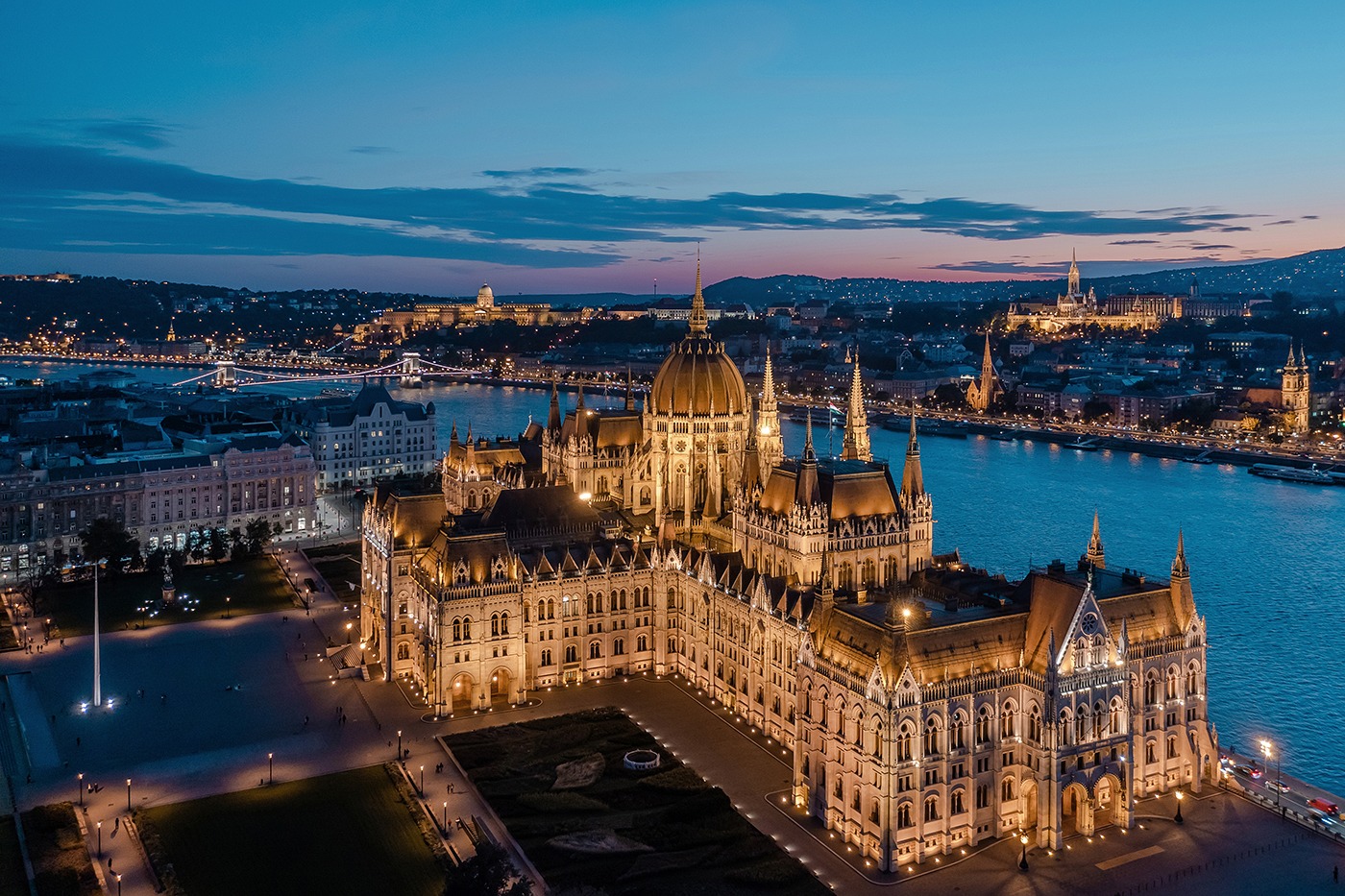

Budapest (ungarische Aussprache ['budɒpɛʃt];  anhören?/i) ist die Hauptstadt und zugleich größte Stadt Ungarns. Mit über 1,7 Millionen Einwohnern ist Budapest die zehntgrößte Stadt der Europäischen Union. Laut dem britischen Marktforschungsunternehmen Euromonitor International gehört sie zu den zwanzig am häufigsten von Touristen besuchten Städten Europas.[3] Die Einheitsgemeinde Budapest entstand 1873 durch die Zusammenlegung der zuvor selbstständigen Städte Buda (dt. Ofen), Óbuda (Alt-Ofen), beide westlich der Donau, und Pest östlich der Donau. Der Name Budapest selbst tauchte zuvor nicht auf, üblich im Sprachgebrauch war Pest-Buda.
anhören?/i) ist die Hauptstadt und zugleich größte Stadt Ungarns. Mit über 1,7 Millionen Einwohnern ist Budapest die zehntgrößte Stadt der Europäischen Union. Laut dem britischen Marktforschungsunternehmen Euromonitor International gehört sie zu den zwanzig am häufigsten von Touristen besuchten Städten Europas.[3] Die Einheitsgemeinde Budapest entstand 1873 durch die Zusammenlegung der zuvor selbstständigen Städte Buda (dt. Ofen), Óbuda (Alt-Ofen), beide westlich der Donau, und Pest östlich der Donau. Der Name Budapest selbst tauchte zuvor nicht auf, üblich im Sprachgebrauch war Pest-Buda.
Budapest liegt an der Donau, die an dieser Stelle das ungarische Mittelgebirge verlässt und in das ungarische Tiefland fließt. Die höchste Erhebung in Budapest ist der zu den Budaer Bergen zählende 527 Meter hohe János-Berg (ungarisch János-hegy). Weitere Budaer Berge sind der Gellértberg (Gellért-hegy), der Burgberg (Várhegy), der Rosenhügel (Rózsadomb), der Sonnenberg (Naphegy), der Adlerberg (Sashegy), der Martinsberg (Mártonhegy), der Schwabenberg (Svábhegy) und der Széchenyiberg (Széchenyi-hegy). Geotektonisch gesehen liegt die Stadt auf einer Bruchstelle, deshalb ist besonders Buda so reich an Thermalquellen.
Budapests Geschichte beginnt um 89 mit der Gründung eines römischen Militärlagers in ehemals vom keltischen Stamm der Eravisker besiedeltem Gebiet. In der Folge entstand um das Lager die römische Siedlung Aquincum, die zwischen 106 und 296 Hauptstadt der Provinz Pannonia inferior war. Unter römischer Herrschaft prosperierte die Stadt, es lassen sich ein Statthalterpalast, mehrere Amphitheater und Bäder nachweisen, außerdem wurde die an der gefährdeten römischen Donaugrenze gelegene Stadt mit einer Mauer versehen.
Die später christianisierten und sesshaft gewordenen Ungarn wohnten in Dörfern mit Kirchen und betrieben Ackerbau und Viehzucht. Im Zentrum wichtiger Verkehrswege gewann Pest immer mehr an Bedeutung. Bereits zu dieser Zeit entstand über die Donau (etwa bei der heutigen Elisabethbrücke) ein reger Fährverkehr zum gegenüberliegenden Buda. Mit der Krönung Stephans I. (am Weihnachtstag 1000 oder 1. Januar 1001) zum ersten König von Ungarn bauten die Ungarn ihre Vorherrschaft aus. Durch den Einfall der Mongolen („Mongolensturm“) 1241 kam es nach der Schlacht bei Muhi fast zur völligen Zerstörung. Die königliche Residenz wurde zunächst nach Visegrád verlegt. 1308 wurde die Stadt erneuert und 1361 Hauptstadt des Königreiches. 1514 fand ein Bauernaufstand statt.
布达佩斯(匈牙利语:Budapest,发音:'budɒpɛʃt)是匈牙利首都[6],也是该国主要的政治、商业、运输中心和最大的城市[7],也被认为是东欧一个重要的中继站[8]。布达佩斯的人口在1980年代中期曾达到高峰207万(布达佩斯都会区人口达到2,451,418人[9]),目前仅有约170万居民,它是欧洲联盟第七大城市。该市是在1873年由位于多瑙河右岸(西岸)的城市布达和古布达以及左岸(东岸)城市佩斯合并而成的[10][11]。此前没有布达佩斯这个称呼,过去人们一般将它称为佩斯-布达(Pest-Buda)。
布达佩斯有记载的历史开始于罗马帝国89年建立的的一个城堡阿奎库以及它北部产生的居民区,这个居民区位于今天的老布达。当时当地的居民主要是凯尔特人。从106年开始一直到4世纪阿奎库是潘诺尼亚省的省会,它位于潘诺尼亚的自然边界多瑙河上。其城堡对于罗马帝国来说有重要的地位,因此自然成为总督的驻地。107年哈德良开始在这里建造总督宫殿。
从1526年开始哈布斯堡王朝获得了匈牙利国王的位置。哈布斯堡王朝终于战胜了奥斯曼帝国恢复了匈牙利。但是布达与佩斯的处境并没有任何变化,统治它们的依然是外族人,而且它们的居民依然必须负很高的税。市内爆发市民暴动,但是被镇压。1723年佩斯成为王国政府的驻地。1838年佩斯发大水,七万人丧生。虽然如此佩斯依然是18世纪和19世纪发展最快的城市。到1800年,佩斯的人口在一个世纪里增长了20倍,达到600,000人。1780年哈布斯堡王朝设定德语为官方语言,试图以此来控制当地不断爆发的暴动。同时他们从德国向匈牙利移民。佩斯城内大多数居民是德国人。由于布达和佩斯市内有各种民族的人生活,而每个民族对这两座城市都有自己的名字,因此布达佩斯今天在许多语言中均有自己的名字。
ブダペストまたはブダペシュト(ハンガリー語: Budapest, 英語:[ˈbuːdəpɛst], [ˈbuːdəpɛʃt] or [ˈbʊdəpɛst]; ハンガリー語発音: [ˈbudɒpɛʃt] (![]() 音声ファイル))は、ハンガリーの首都であり、同国最大の都市である[2]。
音声ファイル))は、ハンガリーの首都であり、同国最大の都市である[2]。
「ブダペスト」として一つの市でドナウ川の両岸を占めるようになったのは1873年11月17日に西岸のブダとオーブダ、東岸のペストが合併してからである[3][4]。
ドナウ川河畔に位置し、ハンガリーの政治、文化、商業、産業、交通の一大中心都市で[5]、東・中央ヨーロッパ (en) では最大、欧州連合の市域人口では8番目に大きな都市である。しばしばハンガリーのプライメイトシティとも表現される[6]。
ブダペストの市域面積は525km2 (202.7 sq mi)[3]で、2011年の国勢調査によるブダペストの人口は174万人[7]、ピークであった1989年の210万人より減少している[8]。これは、ブダペスト周辺部の郊外化によるものである[9]。ブダペスト都市圏(通勤圏)の人口は330万人である[10][11]。
ブダペストの歴史の始まりはローマ帝国のアクインクムとしてで、もともとはケルト人の集落であった[12][13]。アクインクムは古代ローマの低パンノニア属州の首府となっている[12]。マジャル人がブダペスト周辺にやって来たのは[14]9世紀頃である。最初の集落は1241年から1242年にかけてモンゴルの襲来 (en) により略奪された[15]。15世紀に[16]町が再建されるとブダペストはルネサンス期の人文主義者文化の中心となった[17]。続いてモハーチの戦いが起こり、オスマン帝国による150年間の支配が続き[18]、18世紀、19世紀に新しい時代に入ると町は発展し繁栄する。ブダペストは1873年にドナウ川を挟んだ都市の合併が行われると、世界都市となる[19]。また、1848年から1918年の第一次世界大戦勃発まで列強に含まれたオーストリア=ハンガリー帝国のウィーンに続く第二の首都であった。1920年のトリアノン条約によりハンガリーは国土の72%を失い、ハンガリーの文化や経済をブダペストがすべてを占めるようになった。ブダペストはその大きさや人口で圧倒的に優位に立ち、ハンガリーの他の都市を小さく見せていた[20]。ブダペストはハンガリー革命 (1848年)や1919年のハンガリー評議会共和国、1944年のパンツァーファウスト作戦、1945年のブダペスト包囲戦、1956年のハンガリー動乱など数々の歴史的な舞台の場でもあった。
ブダペストはヨーロッパでも最も美しい街の一つで[2][21][22]、ドナウ川河岸を含め世界遺産が広がりブダ城やアンドラーシ通り、英雄広場は良く知られている。ブダペスト地下鉄1号線Millenniumi Földalatti Vasútはロンドン地下鉄に次いで世界で2番目に古い地下鉄である[21][23]。ブダペストの他のハイライトはセーチェーニ温泉を含めた80の温泉で[24]世界でも最大の地下熱水系統がある[25]。世界で3番目に大きなシナゴーグであるドハーニ街シナゴーグや国会議事堂などもブダペストの見所である。ブダペストの観光客数は年間270万人に上り、ロンドンにある民間調査機関ユーロモニターによればブダペストは世界で37番目に旅行者が多い観光地であるとされている[26]。
Budapest /ˈbuːdəpɛst/ is the capital and the most populous city of Hungary, and the tenth-largest city in the European Union by population within city limits.[9][10][11] The city had an estimated population of 1,752,704 in 2016 distributed over a land area of about 525 square kilometres (203 square miles).[12] Budapest is both a city and county, and forms the centre of the Budapest metropolitan area, which has an area of 7,626 square kilometres (2,944 square miles) and a population of 3,303,786, comprising 33 percent of the population of Hungary.[13][14]
The history of the city began when an early Celtic settlement transformed into a Roman town of Aquincum,[15][16] the capital of Lower Pannonia.[15] The Hungarians arrived in the territory in the late 9th century.[17] By the 11th century, Buda and Óbuda (Old Buda) became the names of their settlements on the west bank of the river Danube, with a formerly Slavic and then German settlement Pest on the opposite side.[3][18] The area was pillaged by the Mongols in 1241.[18] The Battle of Mohács in 1526 was followed by nearly 150 years of Ottoman rule.[19] After the reconquest of Buda in 1686, the region entered a new age of prosperity. Pest-Buda became a global city with the unification of Buda, Óbuda, and Pest on November 17, 1873, with the name 'Budapest' given to the new capital.[12][20] Budapest also became the co-capital of the Austro-Hungarian Empire,[21] a great power that dissolved in 1918, following World War I. The city was the focal point of the Hungarian Revolution of 1848, the Battle of Budapest in 1945, and the Hungarian Revolution of 1956.[22][23]
Budapest is a Beta+ global city with strengths in commerce, finance, media, art, fashion, research, technology, education, and entertainment.[24][25] It is Hungary's financial centre[26] and the highest ranked Central and Eastern European city on Innovation Cities Top 100 index,[27][28][29] as well ranked as the second fastest-developing urban economy in Europe.[30] Budapest is host to many major international organization's regional offices, including the United Nations and ICDT,[31] furthermore it is the headquarters of the European Institute of Innovation and Technology,[32] the European Police College[33] and the first foreign office of the China Investment Promotion Agency.[34] Over 40 colleges and universities are located in Budapest, including the Eötvös Loránd University, Semmelweis University and the notable Budapest University of Technology and Economics.[35][36] Opened in 1896,[37] the city's subway system, the Budapest Metro, serves 1.27 million, while the Budapest Tram Network serves 1.08 million passengers daily.[38]
Budapest is cited as one of the most beautiful cities in Europe,[9][39][40] ranked as "the world's second best city" by Condé Nast Traveler,[41] and "Europe's 7th most idyllic place to live" by Forbes.[42] Among Budapest's important museums and cultural institutions is the Museum of Fine Arts. Further famous cultural institutions are the Hungarian National Museum, House of Terror, Franz Liszt Academy of Music, Hungarian State Opera House and National Széchényi Library. The central area of the city along the Danube River is classified as a UNESCO World Heritage Site and has many notable monuments, including the Hungarian Parliament, Buda Castle, Fisherman's Bastion, Gresham Palace, Széchenyi Chain Bridge, Matthias Church and the Liberty Statue.[43] Other famous landmarks include Andrássy Avenue, St. Stephen's Basilica, Heroes' Square, the Great Market Hall, the Nyugati Railway Station built by the Eiffel Company of Paris in 1877 and the second-oldest metro line in the world, the Millennium Underground Railway.[39] The city also has around 80 geothermal springs,[44] the largest thermal water cave system,[45] second largest synagogue, and third largest Parliament building in the world.[46] Budapest attracts 4.4 million international tourists per year, making it a popular destination in Europe.[47]
Budapest (prononcé [by.da.ˈpɛst] , hongrois : Budapest [ˈbu.dɒ.pɛʃt] Écouter ; allemand : Budapest ou anciennement Ofen-Pesth) est la plus grande ville et la capitale de la Hongrie. Elle se situe en aval du coude du Danube entre le massif de Transdanubie et l'Alföld. Ses habitants sont les Budapestois (en hongrois, budapesti, -ek).
La ville actuelle est créée en 1873 par la fusion de Buda — alors capitale de la Hongrie — de Pest et d'Óbuda1. Elle a pour origine le site d'Aquincum2, un point de peuplement celte3 devenu capitale de la Pannonie inférieure pendant l'époque romaine3. Les Magyars arrivent dans la région au IXe siècle. Leur premier point d'implantation est pillé par les Mongols en 1241-12424. La ville est reconstruite et devient l'un des centres de la culture humaniste de la Renaissance5 au XVe siècle6. Après près de 150 ans de domination ottomane, elle poursuit son développement et connaît son apogée avec l'épanouissement de l'ère industrielle aux XVIIIe et XIXe siècles. Après la fusion de 1873 et l'accession de la ville au rang de seconde capitale de l'Autriche-Hongrie, Budapest atteint les proportions et les caractéristiques d'une ville mondiale7. Marquée par les différentes traces léguées par l'histoire, Budapest a notamment été l'épicentre de la révolution hongroise de 1848, de la République des conseils de Hongrie de 1919, de l'opération Panzerfaust en 1944, de la bataille de Budapest de 1945 et de l'insurrection de 1956.
Considérée comme l'une des plus belles villes d'Europe et comme la « perle » du Danube8,1,9, son panorama, le quartier du château de Buda, l'avenue Andrássy et le métropolitain du Millénaire figurent au patrimoine mondial de l'UNESCO8,10. Destination touristique importante, la ville attire plus de 4,3 millions de visiteurs par an11.
Plus grande ville du pays, elle en est le principal centre politique, culturel, commercial et industriel. Elle abrite le Parlement hongrois, les bâtiments ministériels et les ambassades du pays ainsi que les sièges sociaux des entreprises installées en Hongrie. Son ancien statut de cocapitale de l'Autriche-Hongrie lui confère un rayonnement important dans la Mitteleuropa. La partition du royaume de Hongrie à la suite du traité de Trianon en 1920 en fait une ville démesurée pour la Hongrie dans ses frontières actuelles. La macrocéphalie dont est atteinte la ville se concrétise par la convergence de la plupart des réseaux routiers et ferroviaires du pays en son centre et des écarts démographiques et économiques disproportionnés entre la capitale et la province12 (près de 20 % de la population hongroise est budapestoise). Avec ses 1 702 297 habitants13 (l'aire urbaine en compte 2 524 697), Budapest est également la ville la plus peuplée d'Europe centrale (si l'on exclut Berlin de l'Europe centrale). Elle en est également considérée du point de vue des échanges économiques comme une importante plaque tournante14. Budapest abrite le siège de l'Institut européen d'innovation et de technologie (IET)15.
Budapest (IPA: [ˈbudɒpɛʃt]; pronuncia italiana moderna: /ˈbudapest/[1]) è la capitale e la maggiore città dell'Ungheria.
Amministrata come un comune autonomo, costituisce inoltre il centro primario del Paese per la vita politica, economica e culturale; al 2016 conta 1 759 407 abitanti, mentre la popolazione residente nell'area metropolitana ammonta a oltre 3 300 000 persone.
Budapest nacque ufficialmente nel 1873 dall'unione delle città storiche di Buda e Óbuda, ubicate sulla sponda destra del Danubio, con l'abitato di Pest, situato sulla riva opposta del fiume e anch'esso di antiche origini; fino al 1918 fu una delle due capitali dell'Impero austro-ungarico, dissoltosi al termine della prima guerra mondiale.
Nel XXI secolo, Budapest è diventata una metropoli globale e si è affermata come una popolare destinazione turistica: nel 2011, secondo i dati forniti da Euromonitor International, la capitale ungherese è stata la 25ª città più visitata del mondo[2].
Budapest ( /ˈbudɒpɛʃt/ (?·i)) es la capital y ciudad más poblada de Hungría,2 así como su principal centro industrial, comercial y de transportes.3 La ciudad posee 1,74 millones de habitantes (2011),4 una disminución significativa respecto de los casi 2,1 millones con que contaba a mediados de los años 1980,5 que representan un quinto de la población total de Hungría. Es la ciudad más poblada de Europa central-oriental y la séptima de la Unión Europea. La ciudad ocupa una superficie de 525 km²6 y su
/ˈbudɒpɛʃt/ (?·i)) es la capital y ciudad más poblada de Hungría,2 así como su principal centro industrial, comercial y de transportes.3 La ciudad posee 1,74 millones de habitantes (2011),4 una disminución significativa respecto de los casi 2,1 millones con que contaba a mediados de los años 1980,5 que representan un quinto de la población total de Hungría. Es la ciudad más poblada de Europa central-oriental y la séptima de la Unión Europea. La ciudad ocupa una superficie de 525 km²6 y su
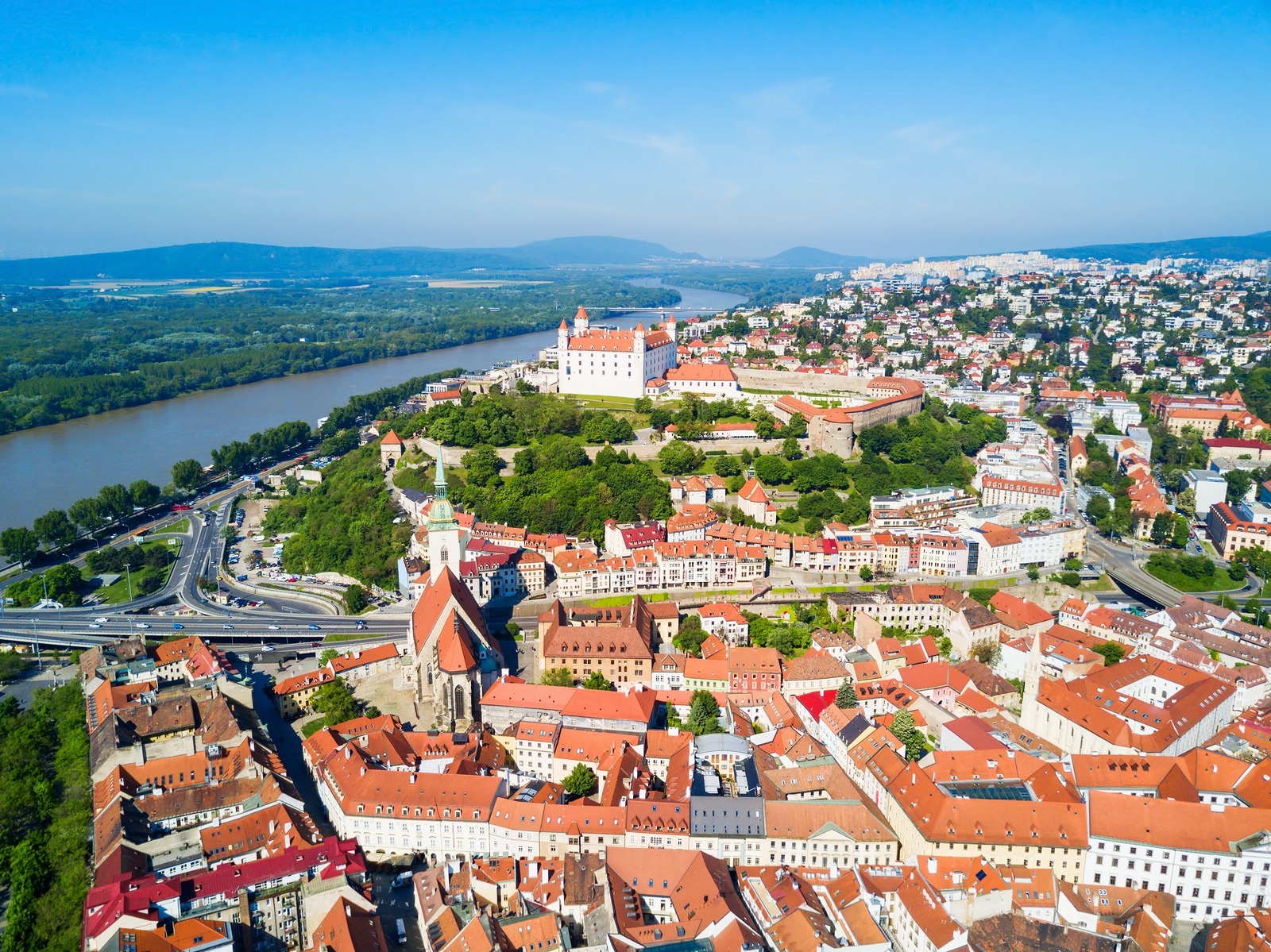
Bratislava ( slowakische Aussprache?/i ['bracɪslava], bis 1919 slowakisch Prešporok, deutsch Pressburg, ungarisch Pozsony) ist die Hauptstadt der Slowakei und mit 429.564 Einwohnern (Stand 31. Dezember 2017) die größte Stadt des Landes. Sie liegt an der südwestlichen Grenze der Slowakei am Dreiländereck mit Österreich und Ungarn und ist damit die einzige Hauptstadt der Welt, die an mehr als einen Nachbarstaat grenzt. Mit rund 55 km Luftlinie haben Bratislava und Wien den geringsten Abstand zweier europäischer Hauptstädte.
slowakische Aussprache?/i ['bracɪslava], bis 1919 slowakisch Prešporok, deutsch Pressburg, ungarisch Pozsony) ist die Hauptstadt der Slowakei und mit 429.564 Einwohnern (Stand 31. Dezember 2017) die größte Stadt des Landes. Sie liegt an der südwestlichen Grenze der Slowakei am Dreiländereck mit Österreich und Ungarn und ist damit die einzige Hauptstadt der Welt, die an mehr als einen Nachbarstaat grenzt. Mit rund 55 km Luftlinie haben Bratislava und Wien den geringsten Abstand zweier europäischer Hauptstädte.
Als politisches, kulturelles und wirtschaftliches Zentrum des Landes ist Bratislava Regierungssitz der Slowakei sowie Standort mehrerer Universitäten, Museen, Theater und weiterer wirtschaftlicher, kultureller und wissenschaftlicher Institutionen.
Die Geschichte der Stadt wurde von zahlreichen Ethnien und Kulturen mit unterschiedlicher Gewichtung geprägt, wie Kelten, Römern, Germanen, Awaren, Deutschen, Magyaren, Juden und Slowaken. Bratislava war im Laufe seiner Geschichte eines der wichtigsten wirtschaftlichen und administrativen Zentren Großmährens, des Königreichs Ungarn (auch im Rahmen der österreichischen Monarchie beziehungsweise Österreich-Ungarns) und der Tschechoslowakei. Die Stadt war von 1536 bis 1783 und 1848 Hauptstadt des Königreichs Ungarn sowie von 1939 bis 1945 Hauptstadt der (ersten) Slowakischen Republik. 1968 wurde Bratislava Hauptstadt des Teilstaates Slowakische Sozialistische Republik (slowakisch: SSR) in der Tschechoslowakischen Sozialistischen Republik (ČSSR) und kurz (1990–1992) in der Tschechischen und Slowakischen Föderativen Republik (ČSFR). Seit 1993 ist sie Hauptstadt des selbständigen Staates Slowakei.
Das Wahrzeichen der Stadt ist die viertürmige Burg Bratislava.
布拉迪斯拉发(斯洛伐克语:Bratislava;旧称Prešporok、德语:Pressburg)是斯洛伐克共和国的首都和最大城市,面积约367平方公里,人口为500,000人左右[1]。布拉迪斯拉发位于斯洛伐克西南部,多瑙河的左畔,紧邻奥地利和匈牙利两国边境,是世界上唯一同时与两个邻国接壤的首都[2]。
布拉迪斯拉发是斯洛伐克共和国的政治、经济与文化的中心,是该国总统府、国会和政府的所在地,也是文化中心,拥有数座大学、博物馆、歌剧院、美术馆以及其他重要的文化与教育机构[3]。斯洛伐克许多大型商业与金融机构的总部也设在布拉迪斯拉发。
该市在历史上曾经长期使用德语名称普莱斯堡(Pressburg),而且曾经受到日耳曼、捷克、匈牙利、犹太和斯洛伐克等各种民族的强烈影响。[4] 从1536年到1783年,该市是哈布斯堡王朝统治下匈牙利王国的首都。布拉迪斯拉发拥有许多斯洛伐克人、匈牙利人和德意志的历史人物,19世纪的斯洛伐克民族运动也以此为基地。
ブラチスラヴァ(スロバキア語: Bratislava, スロバキア語発音: [ˈbratislava] (![]() 音声ファイル))は、スロバキアの首都で同国最大の都市である。旧称はドイツ語 : プレスブルク (Pressburg/Preßburg)、マジャル(ハンガリー)語 : ポジョニ (Pozsony)、スロバキア語 : プレシュポロク (Prešporok/Prešporek)、チェコ語 : プレシュプルク (Prešpurk) で、チェコスロバキア第一共和国建国後の1919年に現名称に改称した。
音声ファイル))は、スロバキアの首都で同国最大の都市である。旧称はドイツ語 : プレスブルク (Pressburg/Preßburg)、マジャル(ハンガリー)語 : ポジョニ (Pozsony)、スロバキア語 : プレシュポロク (Prešporok/Prešporek)、チェコ語 : プレシュプルク (Prešpurk) で、チェコスロバキア第一共和国建国後の1919年に現名称に改称した。
Bratislava (/ˌbrætɪˈslɑːvə, ˌbrɑː-/;[2][3] Slovak pronunciation: [ˈbratislaʋa] ( listen), German: Preßburg or Pressburg IPA: [ˈpʁɛsbʊɐ̯k], Hungarian: Pozsony) is the capital of Slovakia. With a population of about 450,000, it is one of the smaller capitals of Europe but still the country's largest city.[1] The greater metropolitan area is home to more than 650,000 people. Bratislava is in southwestern Slovakia, occupying both banks of the River Danube and the left bank of the River Morava. Bordering Austria and Hungary, it is the only national capital that borders two sovereign states.[4]
listen), German: Preßburg or Pressburg IPA: [ˈpʁɛsbʊɐ̯k], Hungarian: Pozsony) is the capital of Slovakia. With a population of about 450,000, it is one of the smaller capitals of Europe but still the country's largest city.[1] The greater metropolitan area is home to more than 650,000 people. Bratislava is in southwestern Slovakia, occupying both banks of the River Danube and the left bank of the River Morava. Bordering Austria and Hungary, it is the only national capital that borders two sovereign states.[4]
The city's history has been strongly influenced by people of different nations and religions, namely (in alphabetical order) Austrians, Bulgarians, Croats, Czechs, Germans, Hungarians, Jews, Serbs[5] and Slovaks.[6] It was the coronation site and legislative center of the Kingdom of Hungary from 1536 to 1783,[7] and has been home to many Slovak, Hungarian and German historical figures.
Bratislava is the political, cultural and economic centre of Slovakia. It is the seat of the Slovak president, the parliament and the Slovak Executive. It has several universities, and many museums, theatres, galleries and other cultural and educational institutions.[8] Many of Slovakia's large businesses and financial institutions have headquarters there.
In 2017, Bratislava was ranked as the third richest region of the European Union by GDP (PPP) per capita (after Hamburg and Luxembourg City). GDP at purchasing power parity is about three times higher than in other Slovak regions.[9][10]
Bratislava ( ? /ˈbracɪslava/ [Fiche]) est la capitale de la Slovaquie indépendante depuis 1993, située dans le Sud-Ouest du pays, juste à la frontière avec l'Autriche (elle n'est distante que de soixante kilomètres de Vienne), avec la Hongrie (à une dizaine de kilomètres) et à proximité également de la frontière avec la République tchèque.
? /ˈbracɪslava/ [Fiche]) est la capitale de la Slovaquie indépendante depuis 1993, située dans le Sud-Ouest du pays, juste à la frontière avec l'Autriche (elle n'est distante que de soixante kilomètres de Vienne), avec la Hongrie (à une dizaine de kilomètres) et à proximité également de la frontière avec la République tchèque.
Peuplée de 419 678 habitants en 2014, elle est la plus grande ville de Slovaquie1. Les Carpates commencent sur le territoire de la ville (Malé Karpaty, « Petites Carpates »). Elle est traversée par le Danube.
Bratislava est le siège de la présidence, du parlement et du gouvernement slovaques. Elle inclut des universités, de nombreux musées, théâtres et autres institutions culturelles dont une célèbre philharmonie2. La ville était traditionnellement influencée par plusieurs nationalités (Autrichiens, Hongrois, Slovaques…)3.
Au long de son histoire, la ville a aussi été connue sous le nom de Pressburg - Prešporok en slovaque, Pozsony en hongrois, Požun en croate. Elle a été connue en français sous les noms de Presbourg et Posonie.
Bratislava (in passato Presburgo o Posonio, in tedesco Pressburg - in passato Preßburg -, in slovacco era chiamata Prešporok o Prešporek fino al 1919, in ungherese Pozsony) è la capitale della Slovacchia. Con una popolazione di circa 490.000 abitanti è anche la sua città più grande.
Bratislava è il centro economico, politico, scientifico e culturale della Slovacchia e una città in trasformazione in seguito alla crescita economica del Paese e al suo ingresso nell'area euro. È sede del Parlamento e del Presidente della Slovacchia. Ospita università, centri di cultura, musei, teatri e gallerie d'arte. Vi hanno sede le principali attività economiche e finanziarie della Slovacchia.
La storia della città è legata alle nazionalità che vi hanno vissuto: slovacchi, cechi, tedeschi e ungheresi. La città fu capitale del Regno d'Ungheria sotto la monarchia d'Asburgo dal 1536 al 1783, quando Budapest era sotto occupazione ottomana, ed è stata la casa di personalità storiche slovacche, tedesche e ungheresi.
Bratislava (pronunciado en eslovaco  [ˈbratislaʋa] (?·i); hasta 1919: en eslovaco Prešporok, en húngaro: Pozsony, en alemán Pressburg/Preßburg, en croata Požun y en español Presburgo) es la capital y mayor ciudad de Eslovaquia. Tiene aproximadamente 446.819 habitantes (2005) y está situada a orillas del Danubio, cerca de las fronteras con Austria y Hungría, a unos 60 km de Viena.
[ˈbratislaʋa] (?·i); hasta 1919: en eslovaco Prešporok, en húngaro: Pozsony, en alemán Pressburg/Preßburg, en croata Požun y en español Presburgo) es la capital y mayor ciudad de Eslovaquia. Tiene aproximadamente 446.819 habitantes (2005) y está situada a orillas del Danubio, cerca de las fronteras con Austria y Hungría, a unos 60 km de Viena.
La ciudad tiene la mayor densidad de población de la Europa central. Los montes Cárpatos comienzan en el territorio ocupado por la ciudad (Malé Karpaty, Pequeños Cárpatos). Bratislava es la sede del parlamento y gobierno eslovacos y cuenta con una gran oferta artística, cultural y educativa. La zona más interesante desde el punto de vista monumental y artístico es la Ciudad Vieja, con una gran variedad de comercios y servicios, aunque los precios son sensiblemente superiores a los de otras zonas de la ciudad y a los del interior del país. Mención especial merece también el puerto fluvial, donde se pueden ver barcos mercantes y una gran actividad. Bratislava es el centro político, económico, financiero y cultural de Eslovaquia.
Los territorios del sur de Eslovaquia, incluyendo Bratislava, formaron parte del Reino de Hungría desde la llegada de los húngaros en 895 hasta el fin de la Primera Guerra Mundial en 1918.
El Castillo de Bratislava se erigió en el siglo XV durante el reinado de Segismundo de Hungría. En 1811, un incendio destruyó el castillo, así como gran parte del caserío aledaño y, posteriormente, se llevó a cabo una reconstrucción del conjunto. Actualmente, el castillo alberga el Museo Nacional Eslovaco, que abarca exhibiciones arqueológicas, históricas y artísticas.
Una vez caído el reino de Hungría en 1526 ante los turcos otomanos, éste quedó dividido en tres partes: el principado independiente de Transilvania, el valiato de Buda, bajo dominio turco, y el reino húngaro bajo control del Sacro Imperio Romano Germánico. Bratislava se ubicaba en la parte germánica y recibió esa influencia como tal, hasta la expulsión de los turcos de Hungría en 1686. A partir de ese momento, el monarca húngaro era el emperador germánico y, por consiguiente, pretendía germanizar los territorios húngaros y eslovacos. En 1806 desaparece el Sacro Imperio y surge el Imperio austriaco en 1804, que heredó los territorios pertenecientes al reino de Hungría (inclusive Eslovaquia). Luego de las guerras de independencia húngaras contra los austriacos, se firma el acuerdo de Austria-Hungría en la ciudad en 1867 y nace el Imperio austrohúngaro. Bratislava tuvo el nombre Prešporok hasta el fin de la Primera Guerra Mundial y sus antiguos nombres (en alemán Pressburg y en húngaro Pozsony) aún son oficialmente reconocidos.
Братисла́ва (словацк. Bratislava), до 1919 года — Прешпорок или Пре́шпорек (Prešporok, Prešporek), Пре́сбург (нем. Pressburg), По́жонь (венг. Pozsony), в Cредние века — Истрополис (лат. Posonium, лат. Istropolis) — город в Центральной Европе, столица Словакии. Историческая столица Венгерского королевства (с 1541 по 1684 год), Первой Словацкой республики (с 1939 по 1945 год) и Словацкой социалистической республики (с 1965 по 1990 год). Население города составляет 425 923 человека[1], агломерации — около 700 тыс. человек[2] (недоступная ссылка с 14-10-2017 [915 дней]). Площадь города — 368 км².
Братислава и Вена являются самыми близкорасположенными столицами Европы (55 км и менее часа транспортной доступности друг от друга). Братислава непосредственно граничит с Австрией и Венгрией, являясь, таким образом, единственной в мире столицей, граничащей с двумя иностранными государствами. Братиславская улица Копчянская переходит в улицу Альте-Нордзюд-Ландесштрассе соседней австрийской деревни Китзее. До 1936 года из Братиславы в Вену можно было доехать на городском трамвае.
 FIFA Fussball-Weltmeisterschaft 1990
FIFA Fussball-Weltmeisterschaft 1990

 History
History

 International cities
International cities
 *World Design Capital
*World Design Capital
 Italy
Italy
 Winter Olympics
Winter Olympics
 2006 Winter Olympics
2006 Winter Olympics

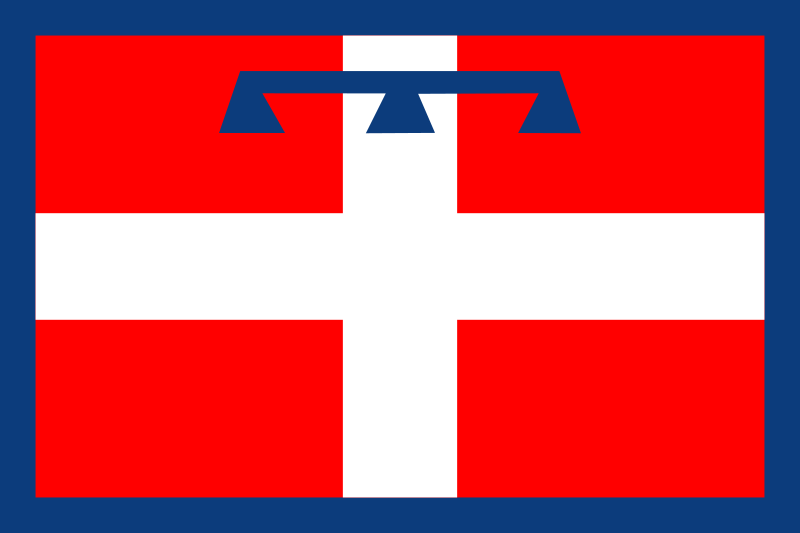 Piemonte
Piemonte
 Turin
Turin

 Ski vacation
Ski vacation

 Cities founded by the Romans
Cities founded by the Romans

Turin (italienisch Torino, lateinisch Augusta Taurinorum, piemontesisch Türin) ist eine Großstadt im Nordwesten Italiens, Verwaltungssitz der Metropolitanstadt Turin und der Region Piemont. Die Stadt hat 886.837 Einwohner im Stadtgebiet und ist somit die viertgrößte italienische Stadt. Etwa 1,7 Mio. Einwohner leben in der Agglomeration (2006) und 2,2 Mio. in der Metropolregion.
都灵(意大利语:Torino [toˈriːno] ![]() 聆听;皮埃蒙特语:Turin [tyˈɾiŋ];拉丁语:Augusta Taurinorum),中国大陆和港澳地区称为都灵,台湾称为杜林,是位于意大利北部的重要城市,皮埃蒙特大区和都灵广域市的首府。它坐落在波河的左岸,距离米兰大约140千米(87英里),阿尔卑斯山环绕在城市的西北。都灵中心区有面积130.17km²,人口911,534[2],是意大利人口第四多的城市;都灵城市区有面积1,126.6 km²,人口1,745,221[3];都灵都市圈有面积1,977 km²,人口2,200,000[4](占意大利总人口的3.4%[5])。
聆听;皮埃蒙特语:Turin [tyˈɾiŋ];拉丁语:Augusta Taurinorum),中国大陆和港澳地区称为都灵,台湾称为杜林,是位于意大利北部的重要城市,皮埃蒙特大区和都灵广域市的首府。它坐落在波河的左岸,距离米兰大约140千米(87英里),阿尔卑斯山环绕在城市的西北。都灵中心区有面积130.17km²,人口911,534[2],是意大利人口第四多的城市;都灵城市区有面积1,126.6 km²,人口1,745,221[3];都灵都市圈有面积1,977 km²,人口2,200,000[4](占意大利总人口的3.4%[5])。
都灵是一国际化的欧洲城市,[6][7] 都灵有时被称为“意大利自由的摇篮”、[8]、“阿尔卑斯之都”、“萨沃亚之都”。它拥有众多的文化设施和其他名胜。都灵因为它的巴洛克、洛可可和新古典主义法式建筑而举世闻名。它的很多广场、城堡、庭园和宫殿(如贵妇宫),都是由西西里建筑师菲利波·尤瓦拉建造的,他在设计时借鉴了法国经典建筑凡尔赛宫。[9] 这些法式建筑的典范包括:王宫、斯杜皮尼吉行宫和苏佩尔加大教堂。许多意大利高等教育机构位于此地,如都灵大学、都灵理工大学、都灵美术学院等。还有许多重要和著名的博物馆,如埃及博物馆[10] 和安托内利尖塔。
都灵曾经是欧洲重要的政治中心。1563年,它成为了萨伏依公国的首都,随后是萨伏依王室统治下的萨丁尼亚王国的首都,最后是意大利统一之后的第一个首都(1861年—1865年)。[11] 同时,它也是萨沃亚王室(意大利王室)的故乡。[12] 虽然因为第二次世界大战,它的大部分政治意义和重要性都丢失了,它还是在战后成为了欧洲重要的工业、商业和贸易的集散地。它现在是意大利的工业中心之一,和米兰、热那亚组成了“工业铁三角”。从经济上来说,都灵紧随罗马和米兰之后,是意大利第三大城市。[13] 它的GDP高达580亿美元,排名世界第78位。[14] 虽然不像罗马、米兰那样是“世界级城市”,GaWC评其为“适合发展”级别。[15]
都灵是意大利汽车制造业的摇篮,被称为“意大利汽车之都”或者“意大利的底特律”。是汽车品牌菲亚特、蓝旗亚和阿尔法·罗密欧的总部所在地。[16][17] 都灵还拥有足球俱乐部尤文图斯和都灵,举办过2006年冬季奥林匹克运动会。一些国际空间站设备,如和谐号节点舱和哥伦布实验舱,也是在都灵制造的。
トリノ(伊: Torino (![]() 音声ファイル))は、イタリア共和国ピエモンテ州にある都市で、その周辺地域を含む人口約87万人の基礎自治体(コムーネ)。ピエモンテ州の州都であり、トリノ県の県都。イタリア第4の人口規模を持つ。都市圏の人口は約170万人。一時は100万都市だったが昨今は人口減少が著しい。
音声ファイル))は、イタリア共和国ピエモンテ州にある都市で、その周辺地域を含む人口約87万人の基礎自治体(コムーネ)。ピエモンテ州の州都であり、トリノ県の県都。イタリア第4の人口規模を持つ。都市圏の人口は約170万人。一時は100万都市だったが昨今は人口減少が著しい。
ミラノに次ぐイタリア第2の工業都市であり、自動車工業の拠点である。近代にはサルデーニャ王国の首都が置かれた。サヴォイア王家の王宮群は世界遺産に登録されている。
Turin (/tjʊəˈrɪn, ˈtʊərɪn/;[2] Italian: Torino [toˈriːno] ( listen); Piemontese: Turin [tyˈriŋ])[3] is a city and an important business and cultural centre in northern Italy. It is the capital city of the Metropolitan City of Turin (an administrative division of Italy) and of the Piedmont region, and was the first capital city of Italy from 1861 to 1865. The city is located mainly on the western bank of the Po River, in front of Susa Valley, and is surrounded by the western Alpine arch and Superga Hill. The population of the city proper is 883,281 (30 November 2017)[4] while the population of the urban area is estimated by Eurostat to be 1.7 million inhabitants. The Turin metropolitan area is estimated by the OECD to have a population of 2.2 million.[5]
listen); Piemontese: Turin [tyˈriŋ])[3] is a city and an important business and cultural centre in northern Italy. It is the capital city of the Metropolitan City of Turin (an administrative division of Italy) and of the Piedmont region, and was the first capital city of Italy from 1861 to 1865. The city is located mainly on the western bank of the Po River, in front of Susa Valley, and is surrounded by the western Alpine arch and Superga Hill. The population of the city proper is 883,281 (30 November 2017)[4] while the population of the urban area is estimated by Eurostat to be 1.7 million inhabitants. The Turin metropolitan area is estimated by the OECD to have a population of 2.2 million.[5]
The city has a rich culture and history, being known for its numerous art galleries, restaurants, churches, palaces, opera houses, piazzas, parks, gardens, theatres, libraries, museums and other venues. Turin is well known for its Renaissance, Baroque, Rococo, Neo-classical, and Art Nouveau architecture. Many of Turin's public squares, castles, gardens and elegant palazzi such as the Palazzo Madama, were built between the 16th and 18th centuries. A part of the historical center of Turin was inscribed in the World Heritage List under the name Residences of the Royal House of Savoy.
The city used to be a major European political center. From 1563, it was the capital of the Duchy of Savoy, then of the Kingdom of Sardinia ruled by the Royal House of Savoy, and the first capital of the unified Italy (the Kingdom of Italy) from 1861 to 1865.[6][7] Turin is sometimes called "the cradle of Italian liberty" for having been the birthplace and home of notable individuals who contributed to the Risorgimento, such as Cavour.[8]
The city currently hosts some of Italy's best universities, colleges, academies, lycea and gymnasia, such as the University of Turin, founded in the 15th century, and the Turin Polytechnic. In addition, the city is home to museums such as the Museo Egizio[9] and the Mole Antonelliana. Turin's attractions make it one of the world's top 250 tourist destinations and the tenth most visited city in Italy in 2008.[10]
Even though much of its political significance and importance had been lost by World War II, Turin became a major European crossroad for industry, commerce and trade, and is part of the famous "industrial triangle" along with Milan and Genoa. Turin is ranked third in Italy, after Milan and Rome, for economic strength.[11] With a GDP of $58 billion, Turin is the world's 78th richest city by purchasing power.[12] As of 2010, the city has been ranked by GaWC as a Gamma World city.[13] Turin is also home to much of the Italian automotive industry.[14][15]
Turin is well known as the home of the Shroud of Turin, the football teams Juventus F.C. and Torino F.C., the headquarters of automobile manufacturers FIAT, Lancia and Alfa Romeo, and as host of the 2006 Winter Olympics.
Turin (Torino en italien, Turin en piémontais) est une ville italienne, chef-lieu de la ville métropolitaine de Turin et de la région du Piémont. Turin fut la capitale des États de Savoie de 1563 à 1713, du royaume de Sicile de 1713 à 1720, du royaume de Sardaigne de 1720 à 1861 et du royaume d'Italie de 1861 à 1865.
Torino (AFI: /toˈrino/[4], ascolta[?·info]; Turin in piemontese[5]) è un comune italiano di 879 808 abitanti[2], capoluogo dell'omonima città metropolitana e della regione Piemonte.
Cuore di un'area metropolitana che conta quasi 2 000 000 di abitanti su una superficie approssimativa di circa 2 300 km²,[6] la città di Torino è il quarto comune italiano per popolazione, il terzo complesso economico-produttivo del Paese e costituisce uno dei maggiori poli universitari, artistici, turistici, scientifici e culturali d'Italia. Nel suo territorio sono inoltre presenti aree ed edifici inclusi in due beni protetti dall'UNESCO: alcuni palazzi e zone facenti parte del circuito di residenze sabaude in Piemonte (patrimonio dell'umanità[7]) e l'area delle colline del Po (riserva della biosfera).
Città dalla storia bimillenaria, fu fondata probabilmente come Taurasia nei pressi della posizione attuale attorno al III secolo a.C. dai Taurini, popolazione ligure (o celto-ligure) dell'Italia settentrionale, e trasformata in colonia romana da Augusto col nome di Iulia Augusta Taurinorum nel I secolo a.C. Dopo il dominio ostrogoto fu capitale di un importante ducato longobardo, per poi passare, dopo essere divenuta capitale di marca carolingia, sotto la signoria nominale dei Savoia nell'XI secolo. Città dell'omonimo ducato, nel 1563 ne divenne capitale. Dal 1720 fu capitale del Regno di Sardegna (anche se solo de facto fino alla fusione perfetta del 1847, quando lo divenne anche formalmente),[8] stato che nel XIX secolo avrebbe portato all'unificazione italiana e che fece di Torino la prima capitale del Regno d'Italia (dal 1861 al 1865).
È stata la patria, natia o adottiva, di alcuni fra i più grandi scrittori e letterati italiani del XIX e XX secolo, tra i quali Edmondo De Amicis, Emilio Salgari, Italo Calvino, Natalia Ginzburg, Norberto Bobbio, Cesare Pavese e Primo Levi.
Sede nel 2006 dei XX Giochi olimpici invernali, città natale di alcuni fra i maggiori simboli del Made in Italy nel mondo, come il Martini, il cioccolato gianduja e il caffè espresso, è il fulcro dell'industria automobilistica italiana, nonché importante centro dell'editoria, del sistema bancario e assicurativo, delle tecnologie dell'informazione, del cinema, dell'enogastronomia, del settore aerospaziale, del disegno industriale e dello sport.
Turín (en italiano: Torino, en piamontés: Turin) es una ciudad, importante centro cultural y de negocios del norte de Italia, capital de la región de Piamonte, localizada principalmente en el margen izquierdo del río Po y rodeada por los Alpes. El área metropolitana de Turín, según la Organización para la Cooperación y el Desarrollo Económico, tiene una población de alrededor de 2.200.000 habitantes.2
La ciudad es rica en cultura e historia. Es conocida por sus numerosos museos de arte, sus restaurantes, sus iglesias, sus palacios, sus teatros de ópera, sus plazas, sus parques, sus jardines y sus bibliotecas, entre otros atractivos. Turín es ampliamente reconocida por su arquitectura barroca, rococo, neoclásica y Art Nouveau. Muchas de las plazas públicas de la ciudad, de los castillos, jardines y elegantes palacios (como el Palazzo Madama), fueron construidos por el arquitecto siciliano Filippo Juvarra, quien diseñó estos edificios en el estilo barroco y clásico del Palacio de Versalles, en Francia.3 Ejemplos de estos edificios de inspiración francesa incluyen el Palacio Real de Turín, el Pabellón de caza de Stupinigi y la Basílica de Superga.
Turín es frecuentemente llamada la «cuna de Italia» por ser el lugar de nacimiento de importantes políticos que contribuyeron con la unificación de Italia, como Cavour.4 La ciudad actualmente alberga algunas de las mejores universidades de Italia, como la Universidad de Turín, de seis siglos de antigüedad, y el Politécnico de Turín. También se encuentran en la ciudad museos prestigiosos e importantes, como el Museo Egipcio de Turín5 (el más antiguo en el mundo y considerado el segundo más importante en el mundo después de El Cairo por valor de los hallazgos) y la Mole Antonelliana. Los diversos monumentos y atracciones de Turín la convierten en una de los 250 principales destinos turísticos del mundo y en la décima ciudad más visitada de Italia para el año 2008.6
La ciudad solía ser un importante centro político europeo, siendo la primera capital de Italia en 1861 y la ciudad de residencia de la Casa de Saboya, la familia real de Italia.7 A pesar de que mucho de su significado e importancia política se había perdido cuando comenzó la Segunda Guerra Mundial, se convirtió en uno de los principales centros industriales y comerciales de Europa, y actualmente es una de las ciudades más industrializadas de Italia, formando junto con Milán y Génova el famoso "triángulo industrial". A pesar de tener muchos menos habitantes que Roma y Milán, Turín es la tercera ciudad más rica de Italia, después de estas.8 Con un Producto Interno Bruto de 58.000 millones de dólares, Turín es la ciudad número 78 en la lista de las más ricas del mundo por su poder adquisitivo.91011 Turín es también la sede de gran parte de la potente industria automovilística italiana.1213
La ciudad es también conocida por resguardar la «Sábana Santa», por ser la sede de los equipos de fútbol Juventus F.C. y Torino Football Club, el lugar donde se producen los coches FIAT, Lancia, Alfa Romeo, Maserati y la sede de los juegos olímpicos de invierno de 2006. Varios módulos de la Estación Espacial Internacional, como el Harmony y el Columbus, fueron fabricados en Turín.
Fue la capital del Ducado de Saboya desde 1563, luego del Reino de Cerdeña y finalmente la primera capital de Italia.14 Piero Fassino fue el alcalde de Turín, elegido en mayo de 2011 para un mandato de 5 años, representando a una coalición de centro-izquierda y fue a su vez el sucesor de Sergio Chiamparino. Desde junio de 2016, la alcaldesa es la economista Chiara Appendino, del partido Movimento 5 Estrellas.
Тури́н (итал. Torino [toˈriːno], пьем. Turin [tyˈɾiŋ]) — город в Италии, важный деловой и культурный центр северной Италии. Административный центр региона Пьемонт и одноимённой провинции Турин.
Расположен при впадении реки Дора-Рипария в реку По, на Паданской равнине у подножия Западных Альп, на подступах к Альпийским перевалам.
Четвёртый после Рима, Милана и Неаполя город Италии по количеству жителей, насчитывает около 880 тыс. чел. (2017), вместе с пригородами 1,7 миллион человек.
Город имеет богатую историю и культуру, и известен своими арт-галереями, дворцами, театрами, музеями, парками. Турин также знаменит своей архитектурой в стилях барокко, рококо, неоклассицизма и модерна.
Большая часть замков, дворцов (в частности Палаццо Мадама), садов и площадей были построены в XVI-XVIII вв. в процессе перевода столицы Савойского герцогства (позднее Сардинское королевство) из Шамбери (ныне Франция) в Турин.
Турин иногда называют «колыбелью итальянской свободы», за то, что он является родным городом заметных политиков и людей, внесших большой вклад в Рисорджименто, например Камилло Бенсо ди Кавур. В городе находятся множество университетов, колледжей, академий, лицеев и гимназий. Среди них основанный в XV веке Туринский университет. Самыми известными достопримечательностями Турина являются Египетский музей и символ города Моле Антонеллиана. Эти и многие другие достопримечательности делают город привлекательным для туристов со всего мира и позволяют Турину входить в десятку самых посещаемых городов Италии[3].
Город в XIX веке являлся важным политическим центром Европы. В 1861 году Турин стал первой столицей объединенной Италии и наряду с этим являлся столицей для Савойского дома, правящей династии Королевства Италии. Несмотря на то, что большая часть политической значимости Турина была растеряна после отмены монархии в Италии, город остается важным промышленным, экономическим и торговым центром Европы и Италии. Турин является третьим по экономическим показателям городом страны, после Милана и Рима. Также Турин является своего рода столицей автомобилестроения Италии. В городе располагаются штаб-квартиры компаний FIAT, Lancia, Iveco.
Город известен в мире благодаря христианской реликвии — Туринской плащанице, а также футбольным командам «Ювентус» и «Торино». Турин — столица зимних Олимпийских игр 2006 года.
Покровителем города считается Св. Иоанн Креститель (итал. San Giovanni Battista). Праздник города — 24 июня.


Cambridge [ˈkeɪmbɹɪdʒ] ist eine Stadt im Vereinigten Königreich, und Hauptstadt der Grafschaft Cambridgeshire mit etwa 123.800 Einwohnern, darunter etwa 24.500 Studenten.
Berühmt sind die University of Cambridge, die gotische Kapelle und der Chor des King’s College, die Universitätsbibliothek sowie das Trinity College. Nach Cambridge sind die Titel des Duke of Cambridge und des Earl of Cambridge benannt. Cambridge liegt am Fluss Cam etwa 80 km nordöstlich von London im Osten Englands. Cambridge wird für Wahlzwecke in 14 wards gegliedert.: Abbey, Arbury, Castle, Cherry Hinton, Coleridge, East Chesterton, King's Hedges, Market, Newnham, Petersfield, Queen Edith's, Romsey, Trumpington und West Chesterton.
剑桥(英语:Cambridge,旧译康桥[2]),英国英格兰东区域剑桥郡的城市、自治市镇-非都市区,是英国历史最悠久的大学城。剑桥建立于康河之上,于伦敦以北约八十公里。二零一一年英国人口普查显示其有人口约十二万四千人,其中约二万五千人为学生。有考古学证据显示早于青铜器时代剑桥已有人聚居,后于罗马和维京时期成为了重要的贸易中心。十二世纪皇家特许状授予剑桥城镇的地位,但它现今城市的地位于一九五一年才被正式授予。
世界知名的剑桥大学一二零九年创立于剑桥。大学的建筑包括国王学院礼拜堂、卡文迪许实验室和剑桥大学图书馆。剑桥大学图书馆是世上最大的法定送存图书馆之一。剑桥的天际线主要是几个大学学院的建筑,也包含圣母暨英格兰殉道圣人堂的尖塔、阿登布鲁克医院的烟囱和圣约翰学院礼拜堂的尖塔。安格里亚鲁斯金大学的主要校址也位于剑桥,此大学演变自剑桥艺术学院(Cambridge School of Art)和剑桥郡科艺学院(Cambridgeshire College of Arts and Technology)。剑桥也是所谓硅沼地(Silicon Fen)的中心,其包含诸如软件和生物科学等等各种高科技产业和各样剑桥大学间接带动的新创企业。多于四成的剑桥劳动人口拥有高等教学学位,此为国家平均的两倍。世上最大的生物医学研究集中地之一的剑桥生物医学园区(Cambridge Biomedical Campus),也即将成为阿斯利康制药和柏特沃斯医院(Papworth Hospital)新址的所在地。
剑桥的帕克公园(Parker's Piece)是世上第一场现代足球比赛的举行地点。剑桥的仲夏公地(Midsummer Common)为仲夏游乐会(Midsummer Fairs)和有称为草莓游乐会(Strawberry Fair)的音乐艺术节之所在地。一年一度的剑桥啤酒节举行于耶稣绿地(Jesus Green)。剑桥在M11和A14公路之旁,而剑桥火车站距离伦敦国王十字车站不足一小时车程。
在剑桥,除了剑桥大学建筑之外,还有商店、公园、茶艺馆,以及代表剑桥现代化一面的百货公司,商店及运动设施。康河上可以泛舟,在剑桥可以参加音乐会或步行到郊外欣赏幽美景色,也可以和剑桥居民一样,享受骑脚踏车的乐趣。
Cambridge (/ˈkeɪmbrɪdʒ/[3] KAYM-brij) is a university city and the county town of Cambridgeshire, England, on the River Cam approximately 50 miles (80 km) north of London. At the United Kingdom Census 2011, its population was 123,867 including 24,506 students.[2][4] Cambridge became an important trading centre during the Roman and Viking ages, and there is archaeological evidence of settlement in the area as early as the Bronze Age. The first town charters were granted in the 12th century, although modern city status was not officially conferred until 1951.
Cambridge is home to the world-renowned University of Cambridge, which was founded in 1209.[5] The university includes King's College Chapel, Cavendish Laboratory, and the Cambridge University Library, one of the largest legal deposit libraries in the world. The city's skyline is dominated by several college buildings, along with the spire of the Our Lady and the English Martyrs Church, the chimney of Addenbrooke's Hospital and St John's College Chapel tower. Anglia Ruskin University, evolved from the Cambridge School of Art and the Cambridgeshire College of Arts and Technology, also has its main campus in the city.
Cambridge is at the heart of the high-technology Silicon Fen with industries such as software and bioscience and many start-up companies born out of the university. More than 40% of the workforce has a higher education qualification, more than twice the national average[citation needed]. The Cambridge Biomedical Campus, one of the largest biomedical research clusters in the world, is soon to be home to AstraZeneca, a hotel and the relocated Papworth Hospital.[6]
Parker's Piece hosted the first ever game of Association football. The Strawberry Fair music and arts festival and Midsummer Fairs are held on Midsummer Common, and the annual Cambridge Beer Festival takes place on Jesus Green. The city is adjacent to the M11 and A14 roads, and Cambridge station is less than an hour from London King's Cross railway station.
Cambridge /'keɪm.brɪdʒ/ est une ville d’Angleterre, au Royaume-Uni, située à 100 km au nord de Londres. Elle est connue pour son université de renommée mondiale, la deuxième plus ancienne d'Angleterre après celle d'Oxford. Elle est également le centre administratif du comté du Cambridgeshire. Depuis 1951, Cambridge possède officiellement le statut de cité.
En 2011, la population de la ville était estimée à 123 867 habitants, dont plus de 24 000 étudiants (parmi lesquels plus de 17 000 étudiants de l'université de Cambridge). Aujourd'hui, 31 collèges sont gérés de manière autonome et indépendante, assurant l'hébergement et le suivi pédagogique des étudiants tandis que l'université se charge de l'enseignement.
Aujourd'hui Cambridge est au cœur d'un centre de techniques de pointe surnommé le Silicon Fen (d'après Silicon Valley). Sa force économique et innovatrice repose sur les industries de l'informatique, la biologie et des startup couvées par l'université. Plus de 40 % de la population possèdent un diplôme d'éducation supérieure, plus de deux fois la moyenne nationale.
Cambridge /ˈkeɪmbrɪdʒ/ es un distrito no metropolitano del Reino Unido, una ciudad universitaria inglesa muy antigua y la capital del condado de Cambridgeshire, a orillas del río Cam.
Se encuentra aproximadamente a ochenta kilómetros de Londres y la rodean varias villas y pueblos. Su fama la debe a la Universidad de Cambridge, que incluye a los Laboratorios Cavendish (denominados así en honor a Henry Cavendish), el hospital Addenbrooke, el coro de la capilla del King's College y la Biblioteca de la Universidad. Estos dos últimos edificios sobresalen respecto del resto de la ciudad. En la ciudad también se encuentra un campus de la Universidad Anglia Ruskin.
De acuerdo con el censo de 2001, la ciudad cuenta con 108 863 habitantes2 (de ellos, 22 153 son estudiantes).
El nombre de la ciudad significa «puente del [río] Cam».
En abril de 2011, la ciudad le da su nombre al título de nobleza «duque de Cambridge» al príncipe Guillermo Arturo Felipe Luis tras su matrimonio con Catalina (Kate) Middleton, debido a la tradición británica de que a los príncipes reales se les conceda un título nobiliario al contraer matrimonio.
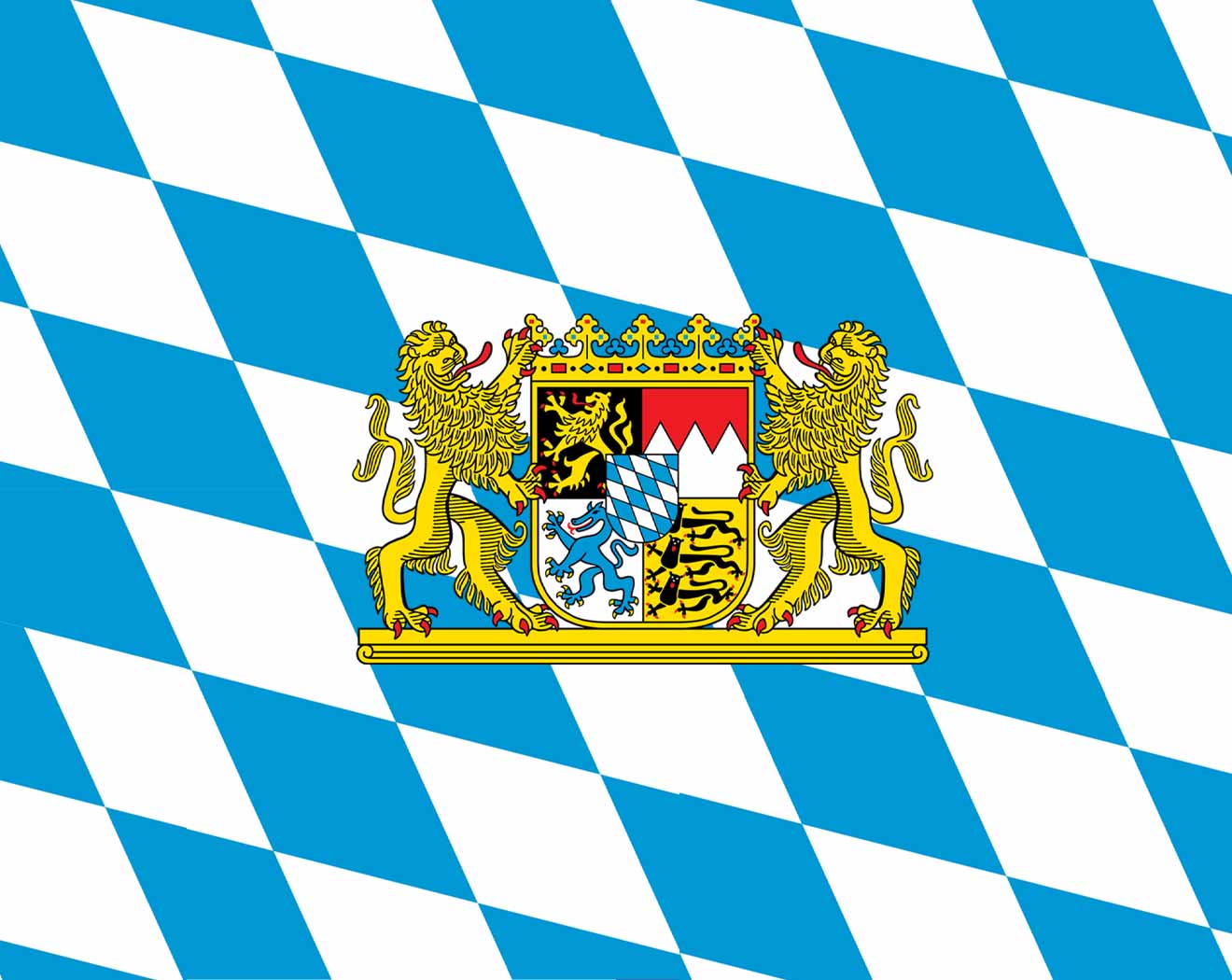 Bavaria
Bavaria
 World Heritage
World Heritage
 Centre-Val de Loire
Centre-Val de Loire
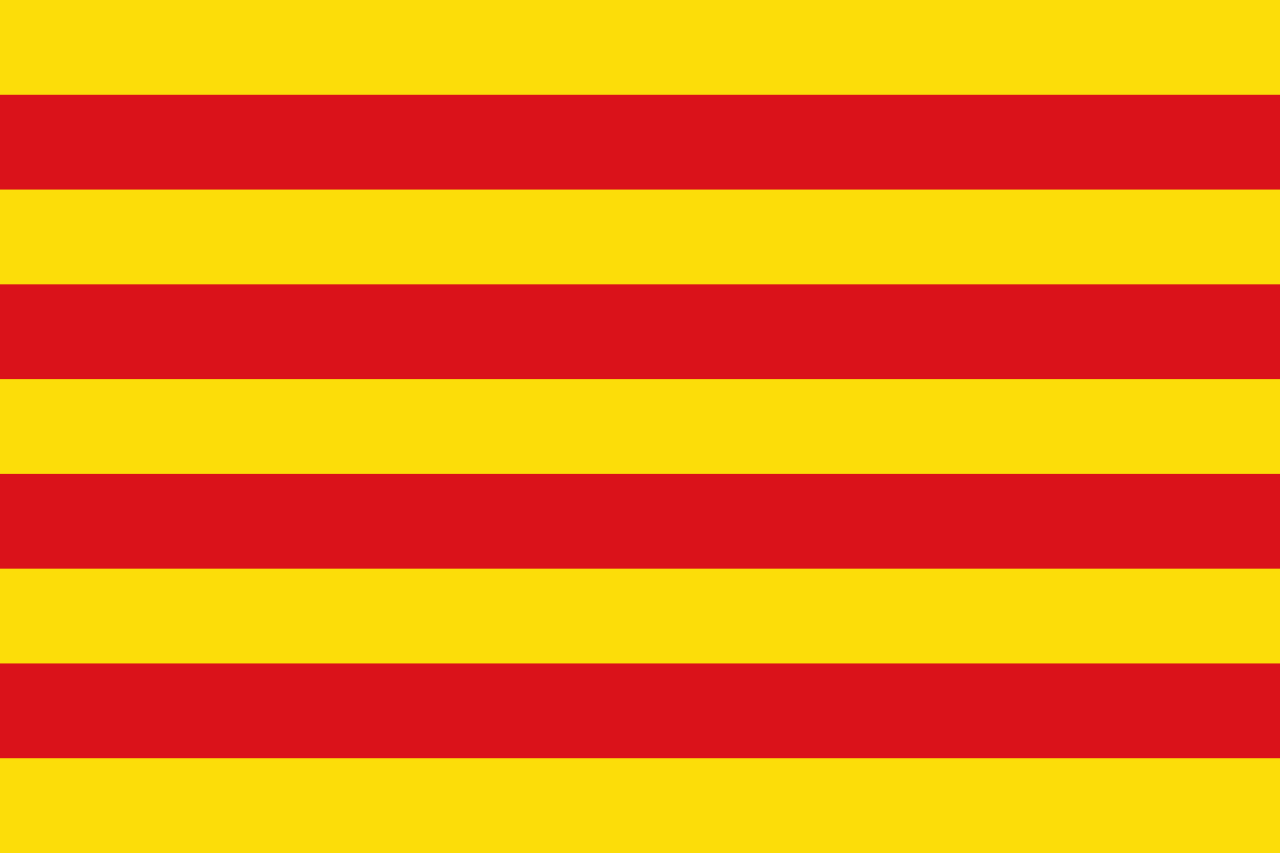 Cataluña
Cataluña
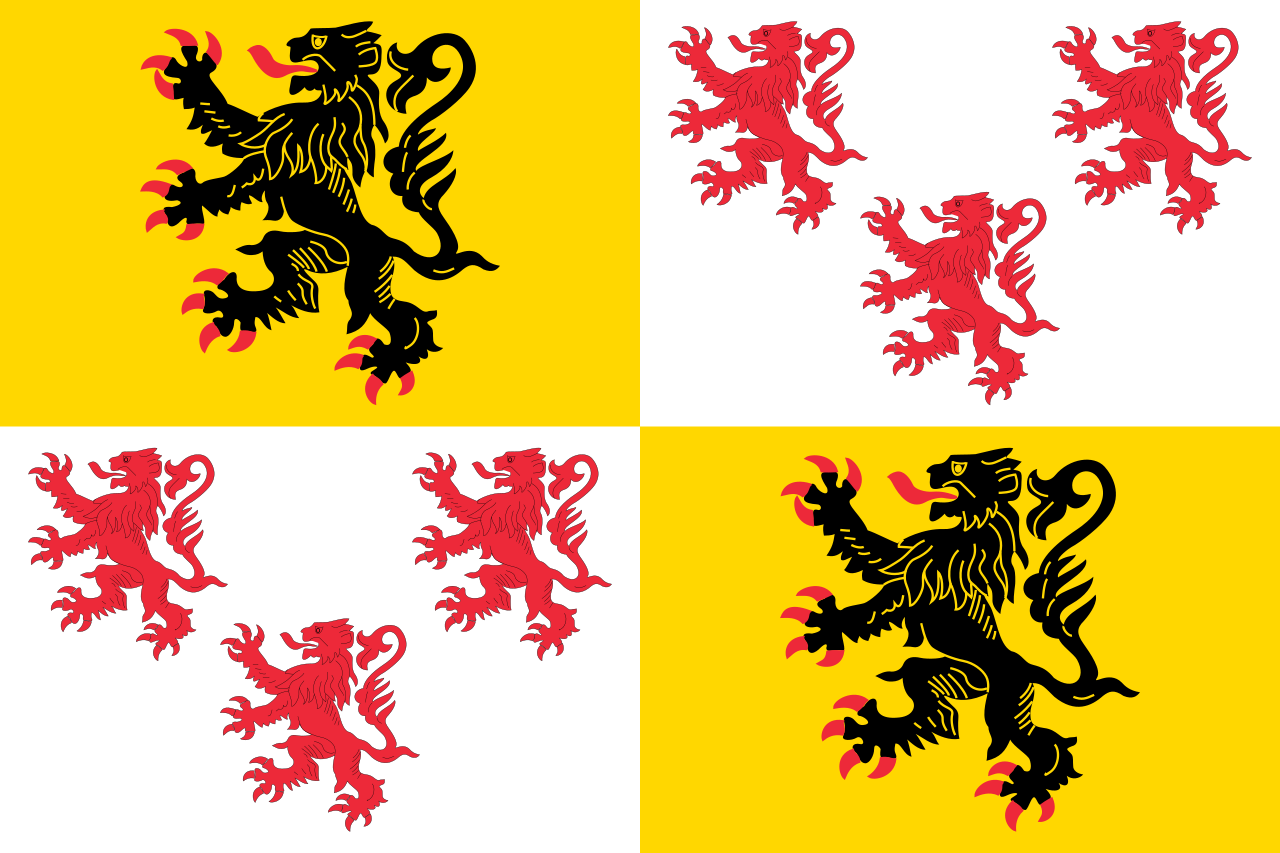 Hauts-de-France
Hauts-de-France